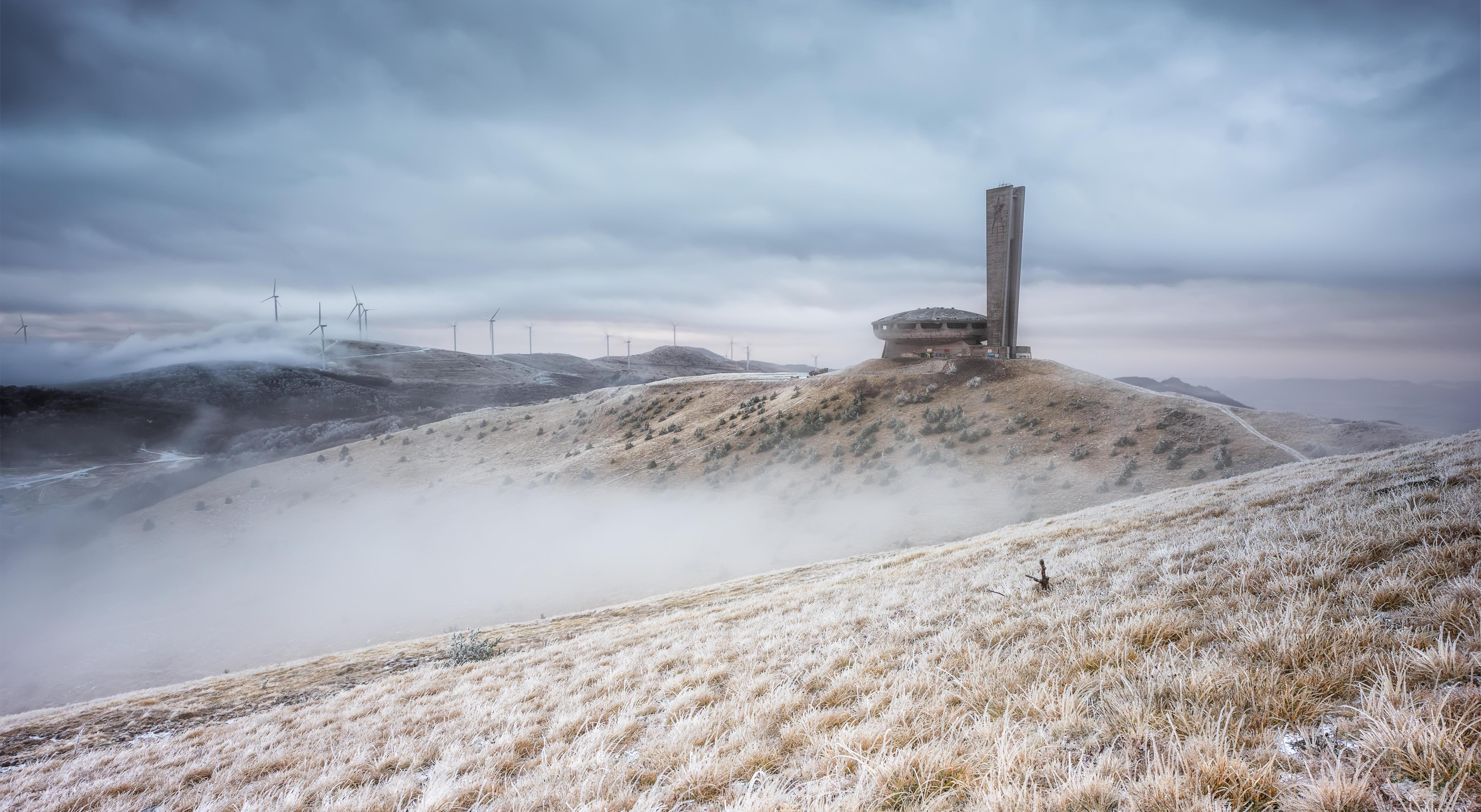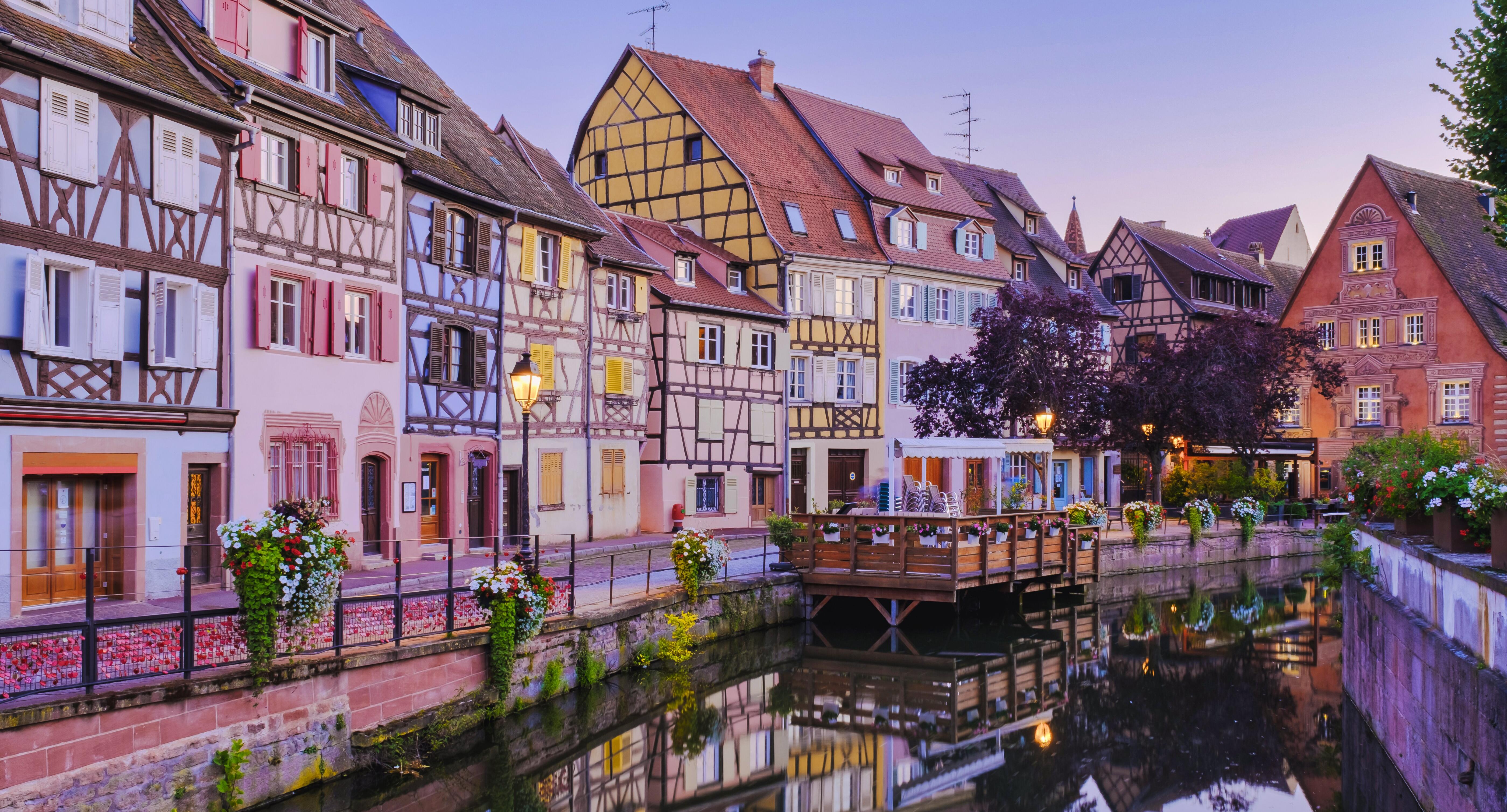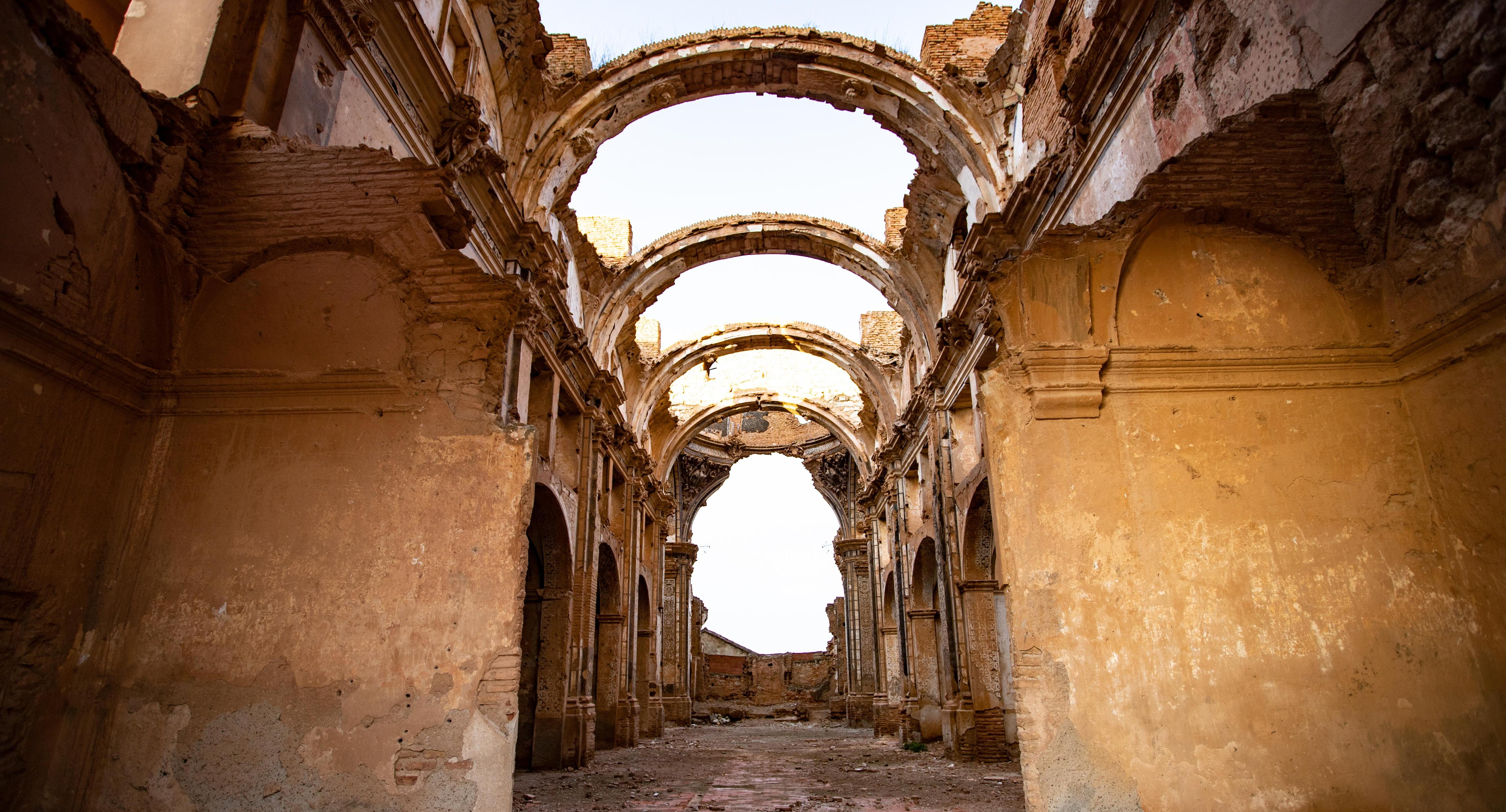The 28 Most Unique College Stadiums Designed Like No Other
College stadiums are more than just playing fields—they are monuments to history, passion, and architectural ingenuity. From breathtaking mountain backdrops to stadiums built on lakes, each venue tells a story that goes far beyond the game itself. These arenas are where generations of students, alumni, and fans unite, where records are shattered, and where traditions come alive. As collegiate sports continue to evolve, so too have the stadiums that host them. Some boast cutting-edge designs with retractable roofs and high-tech amenities, while others remain timeless relics of the past, preserving the deep-rooted legacy of their institutions. Whether nestled in scenic landscapes, showcasing unconventional layouts, or housing features you won’t find anywhere else, these stadiums prove that college sports architecture is just as much about creativity as it is about competition. That’s why we’ve expanded our list to 28 of the most unique college stadiums designed like no other.
1. The Coliseum Effect: Legacy of the Los Angeles Memorial Coliseum
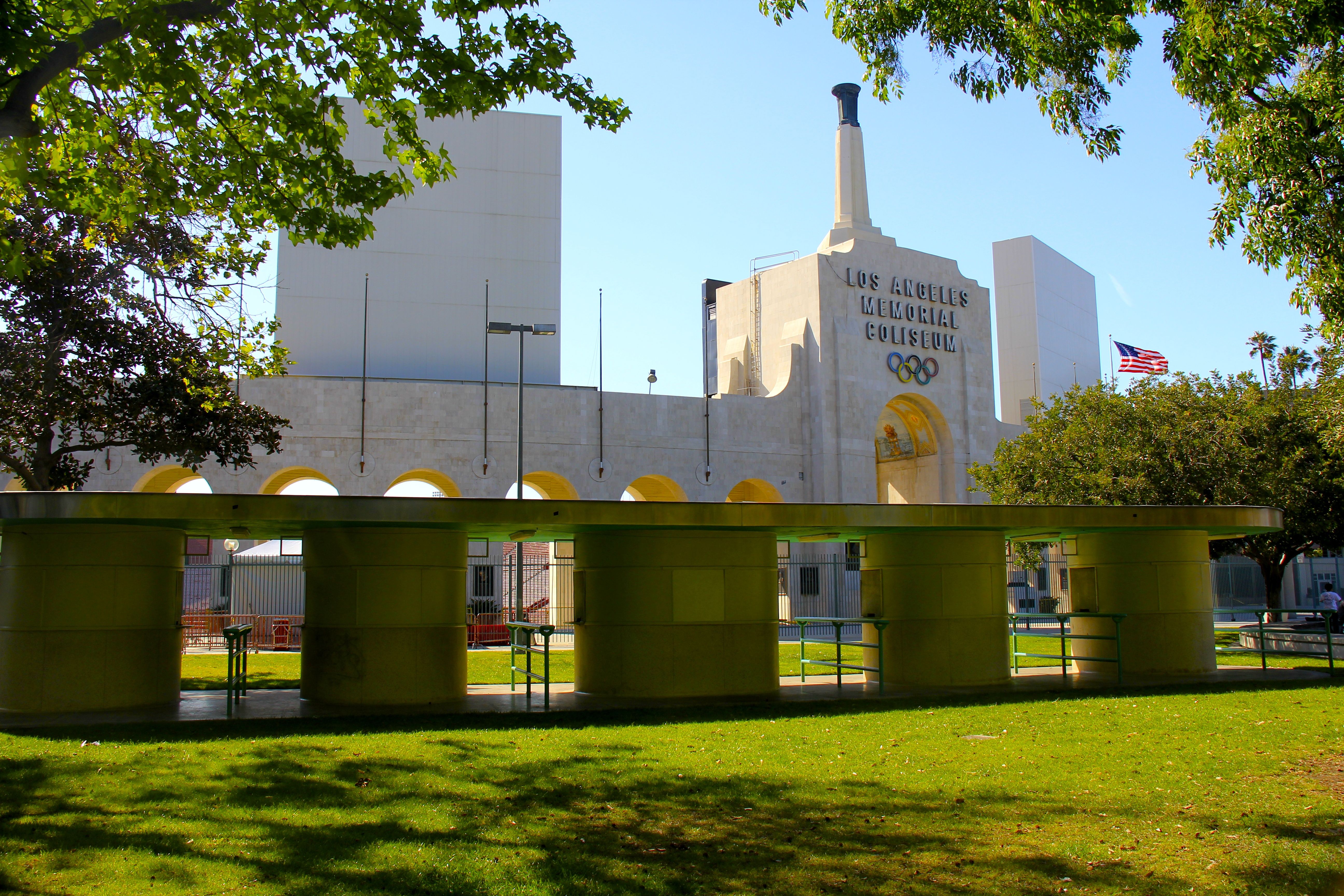
The Los Angeles Memorial Coliseum is more than just a college football stadium—it’s a living monument to sports history. Nestled in the heart of Los Angeles, this colossal venue has witnessed some of the most defining moments in sports, standing as a symbol of resilience, excellence, and tradition. First opening in 1923, the Coliseum quickly became a centerpiece for college football, serving as the home of the USC Trojans and hosting numerous national championship games, Rose Bowls, and historic rivalries. But what truly sets the Coliseum apart is its multi-generational impact on sports, having hosted two Olympic Games (1932 and 1984)—and soon, a third in 2028. This rare feat cements its status as a global icon in the world of athletics. The stadium’s signature peristyle end, towering torch, and massive 77,500-seat capacity create an awe-inspiring setting for any game. With its open-air design and historic architecture, stepping into the Coliseum feels like stepping back in time, while still embracing modernity through significant renovations. Recent upgrades have introduced state-of-the-art amenities, blending contemporary fan experiences with the timeless grandeur of its past. From the electric energy of a USC home game to the echoes of legendary moments from the Olympics and Super Bowls, the Los Angeles Memorial Coliseum remains a titan among college stadiums, proving that some venues are truly built to transcend generations.
2. The Rose Bowl: Tradition Meets Modernity
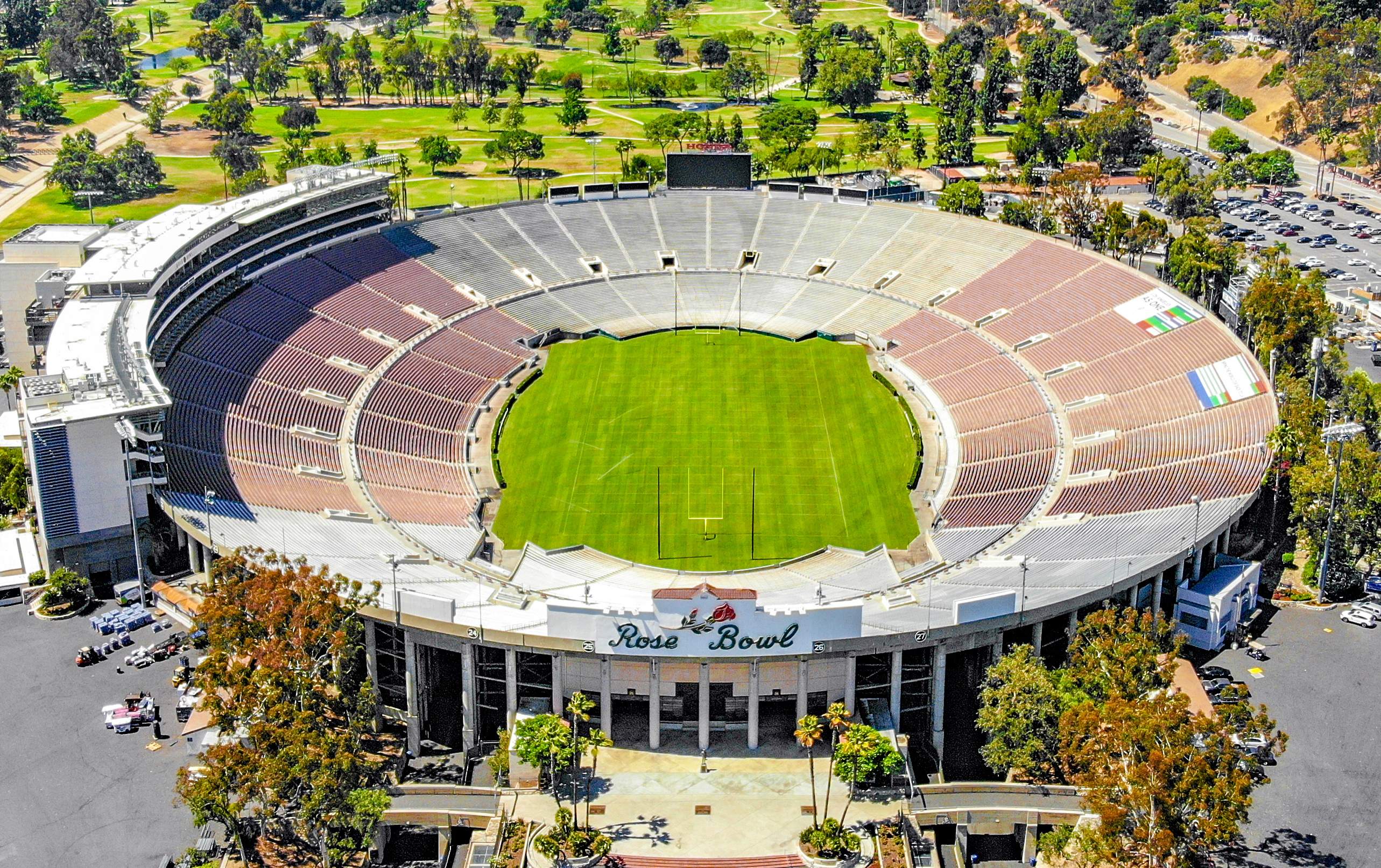
If there is one stadium that defines the soul of college football, it’s the Rose Bowl in Pasadena, California. Renowned as the granddaddy of them all, the Rose Bowl has been the crown jewel of New Year's Day college football games since 1923, when it hosted its first Tournament of Roses Bowl Game. With a picturesque setting against the backdrop of the San Gabriel Mountains, the Rose Bowl doesn’t just host football—it hosts history. This 92,000-seat marvel has witnessed some of the most iconic matchups in college football, including breathtaking national championship games, fierce conference battles, and unforgettable upsets. Beyond its role in college athletics, the Rose Bowl has also served as the stage for five Super Bowls, two FIFA World Cup Finals, and an Olympic Gold Medal Match, proving its versatility and prestige in the world of sports. Despite its historical roots, the stadium has evolved with the times, integrating modern seating, enhanced video boards, and luxury suites, all while preserving its classic charm. Stepping into the Rose Bowl is stepping into a time capsule, where tradition and modernity merge to create an atmosphere unlike any other. It remains one of the most storied and sought-after venues in sports, standing as a pillar of excellence for both college football and beyond.
3. Innovation at Autzen Stadium: The Loudest Roar in College Football
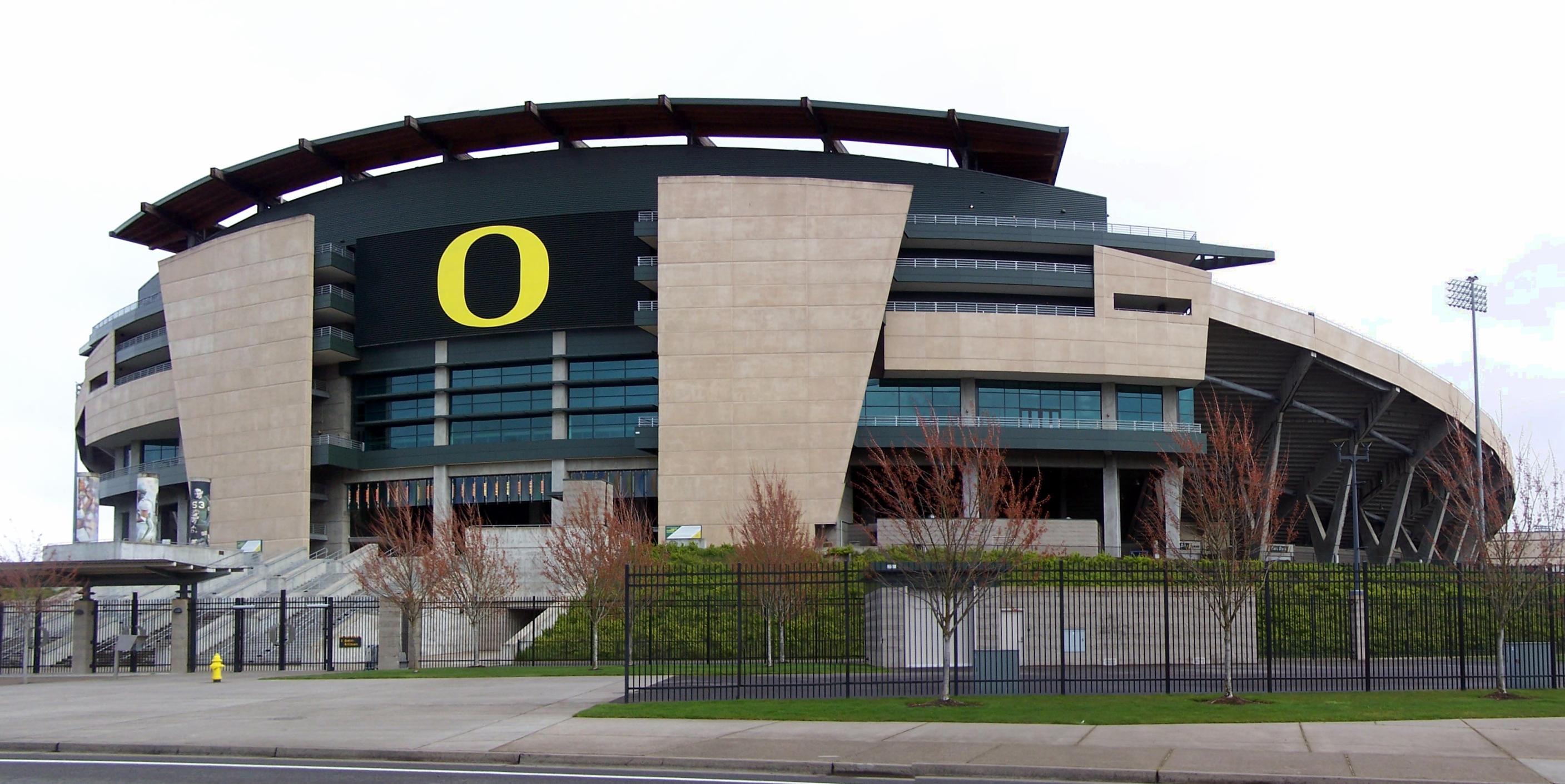
When it comes to pure, unfiltered noise, few college football stadiums can rival the deafening roar of Autzen Stadium, home of the Oregon Ducks. Though its official capacity sits at just over 54,000, the stadium regularly outperforms its size, creating an earth-shaking atmosphere that rivals the most iconic venues in the sport. Thanks to its ingenious architectural design, which traps and amplifies sound, Autzen Stadium has earned a reputation as one of the loudest stadiums in all of college football. Beyond the ear-splitting energy, Autzen is a model of innovation and fan engagement. Oregon’s cutting-edge approach to sports science and technology extends beyond its world-renowned uniforms and facilities—Autzen Stadium itself is a beacon of progress. From high-tech turf surfaces to state-of-the-art LED video displays, everything about the stadium is designed for a next-generation game day experience. For visiting teams, Autzen presents a psychological and physical challenge—the noise, the passion of Oregon’s die-hard fanbase, and the stadium’s intimate feel create a truly hostile environment. Few stadiums can claim the kind of home-field advantage that Autzen does, making it one of the most distinctive and intimidating college stadiums in the world.
4. The Frozen Fortress: Ralph Engelstad Arena
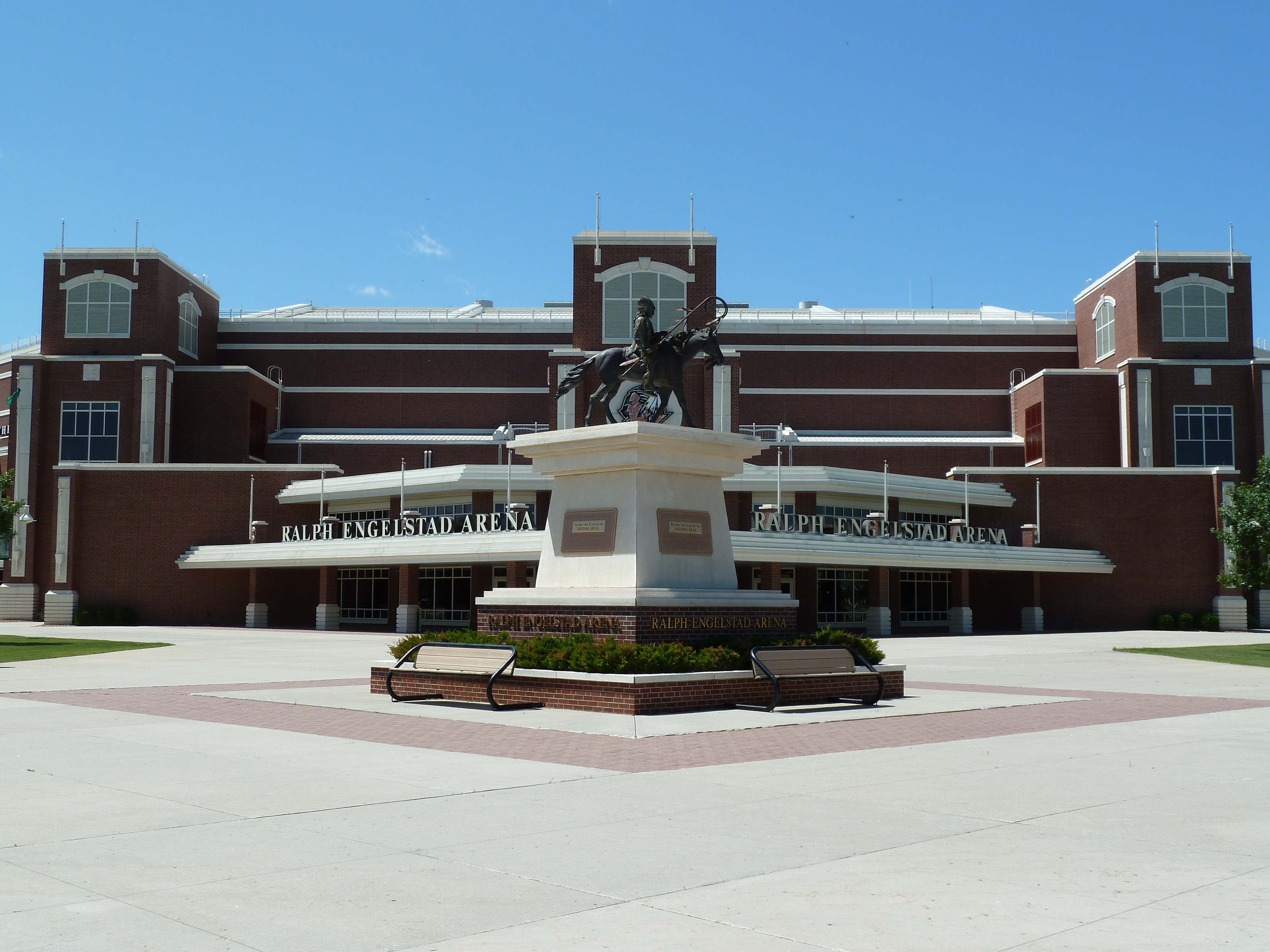
In the world of college hockey, no venue matches the extravagance and sheer dominance of Ralph Engelstad Arena in Grand Forks, North Dakota. Nicknamed the “Taj Mahal of Hockey”, this $104 million masterpiece is the home of the University of North Dakota Fighting Hawks, one of the most decorated college hockey programs in history. What sets Ralph Engelstad Arena apart isn’t just its ice-cold intensity, but the opulence that surrounds every inch of the facility. From Italian marble floors to granite concourses, from 1,200 leather seats in the club level to mahogany wood lockers, no expense was spared in making this arena a true hockey cathedral. Even the dasher boards are made of the highest quality material available, designed to reduce puck bounce for optimal playability. Beyond its aesthetics, Engelstad Arena has a legendary atmosphere, with its devoted fanbase, blaring fight songs, and a championship pedigree that makes every game feel like a Stanley Cup showdown. Whether you’re a hockey fan or not, stepping into this arena of extravagance is an experience that cements its place as one of the most awe-inspiring college stadiums in the world.
5. A Beacon of Sustainability: Husky Stadium
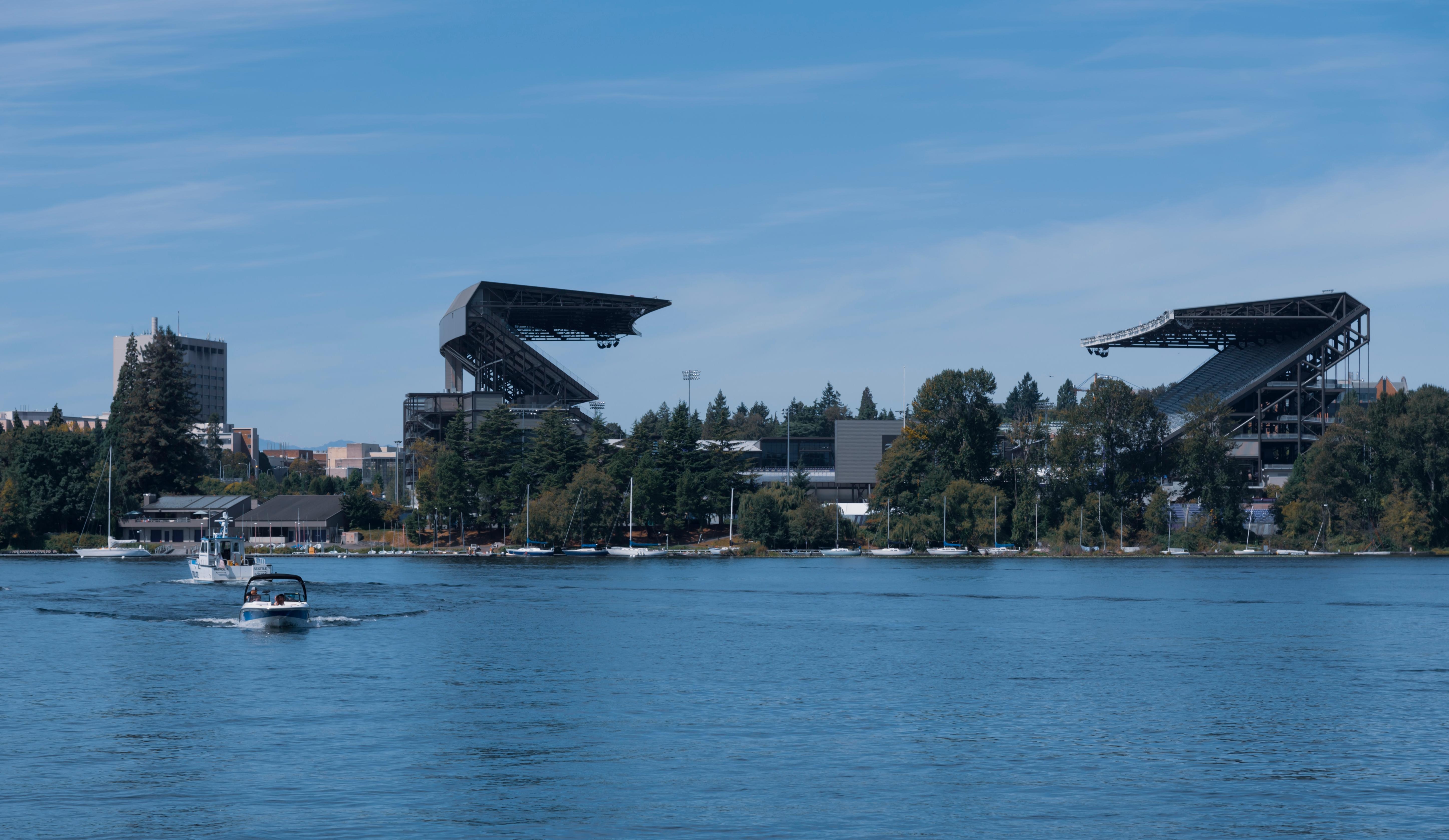
With jaw-dropping views of Lake Washington and the Seattle skyline, Husky Stadium is one of the most scenic and environmentally conscious stadiums in all of college sports. Home to the University of Washington Huskies, this stadium is as much about sustainability as it is about creating an unforgettable game day experience. What sets Husky Stadium apart from the rest is its commitment to green innovation. The 2013 renovation project was one of the largest sustainable stadium overhauls in history, incorporating recycled materials, energy-efficient systems, and improved stormwater management. The result? A high-tech, eco-friendly venue that leads the way in environmental responsibility. Beyond its sustainability efforts, Husky Stadium is famous for its one-of-a-kind fan experience. Thanks to its unique location on the shores of Lake Washington, fans can arrive by boat, docking their vessels in a pre-game tailgate scene like no other—a tradition known as "Sailgating." Once inside, the steeply pitched stands and partial roof design help create an intimidating sound trap, making Husky Stadium one of the loudest stadiums in college football.
6. The Cathedral of College Basketball: Cameron Indoor Stadium
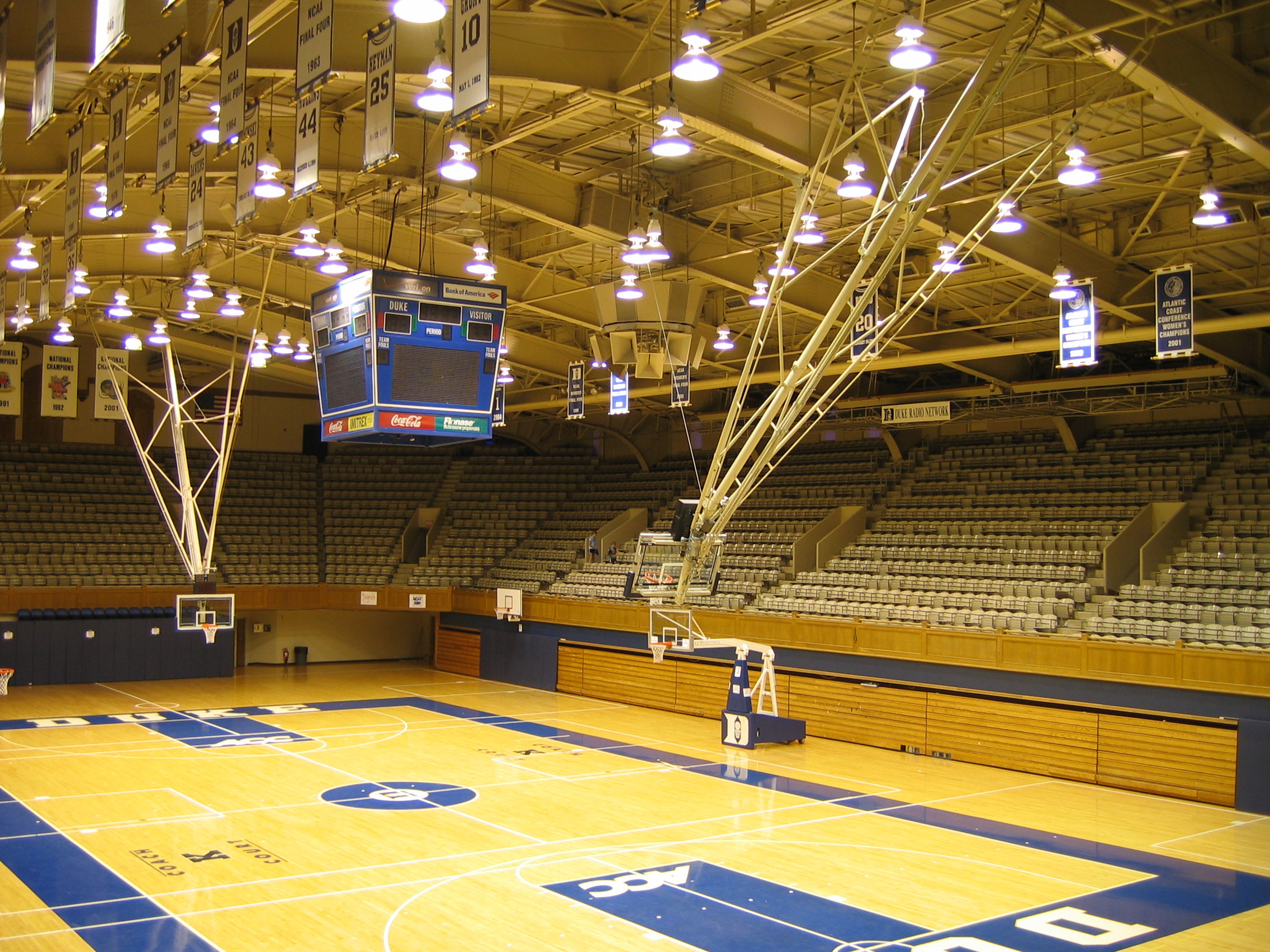
For college basketball fans, few places in the world are as sacred, electric, and intimidating as Cameron Indoor Stadium at Duke University. Built in 1940, this historic venue isn’t the biggest or the flashiest, but it is, without question, one of the most revered and unique college stadiums ever designed. With a seating capacity of just 9,314, it is one of the smallest arenas among major college programs, yet that is precisely what makes it so special. Unlike modern, cavernous arenas, Cameron Indoor’s compact and intimate design places the crowd right on top of the court, making it feel as if the walls themselves are closing in on the opposition. The Duke student section, famously known as the “Cameron Crazies,” is the lifeblood of the stadium, creating an atmosphere unlike anything in sports. Their synchronized chants, coordinated chaos, and relentless heckling turn Cameron into an absolute madhouse on game nights. The brick façade and classic arched entryways give Cameron Indoor a timeless charm, and the wooden bleachers and original architecture pay homage to an era when college basketball’s mystique was just beginning to take shape. Legendary coach Mike Krzyzewski, who spent over 40 years on the sidelines here, helped turn the arena into a fortress where countless national championship teams were forged. The ghosts of basketball greatness linger in the air, making Cameron Indoor Stadium a true basketball cathedral where history, passion, and intimidation collide in spectacular fashion.
7. The High Altitude Challenge: Folsom Field
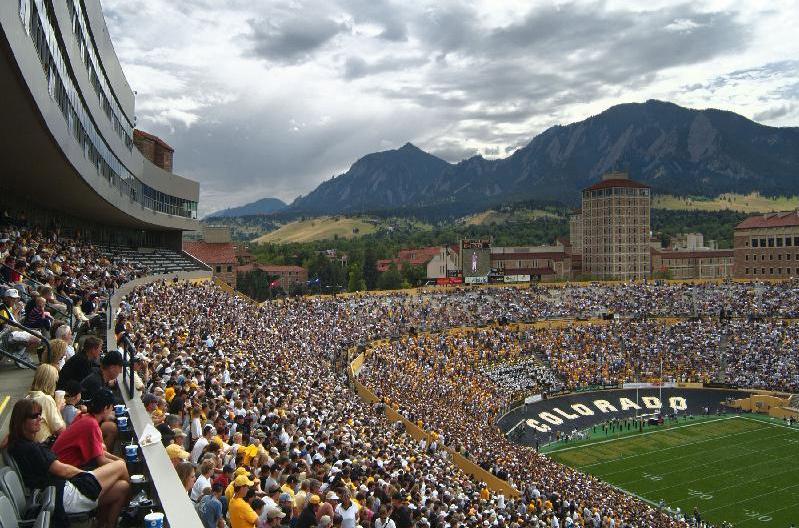
There are few stadiums in the world where the very air itself is a weapon, but that’s exactly the case at Folsom Field, home to the University of Colorado Buffaloes. Perched at a staggering 5,430 feet above sea level, Folsom Field forces visiting teams into a battle against both the Buffaloes and the elements. The thin mountain air in Boulder, Colorado, means that players not accustomed to the altitude struggle to breathe and fatigue faster, creating an advantage that no other college football stadium can replicate. But it’s not just the altitude that makes Folsom Field one of the most unique and breathtaking college stadiums in the world—it’s also the scenery. Nestled against the majestic Rocky Mountains, this venue offers some of the most picturesque views in all of sports. On crisp autumn afternoons, the stadium erupts with gold and black, and as the sun sets over the mountains, the atmosphere transforms into something truly magical. Built in 1924, Folsom Field has stood the test of time, evolving into a modern football venue while retaining its classic feel. The Buffalo March, featuring the team’s live mascot, Ralphie the Buffalo, charging across the field before kickoff, is one of the greatest traditions in college football. When combined with the altitude, the roaring crowd, and the surreal mountain backdrop, Folsom Field is an experience like no other, proving that college stadiums don’t just host games—they shape legends.
8. The Swamp: Ben Hill Griffin Stadium's Unique Atmosphere
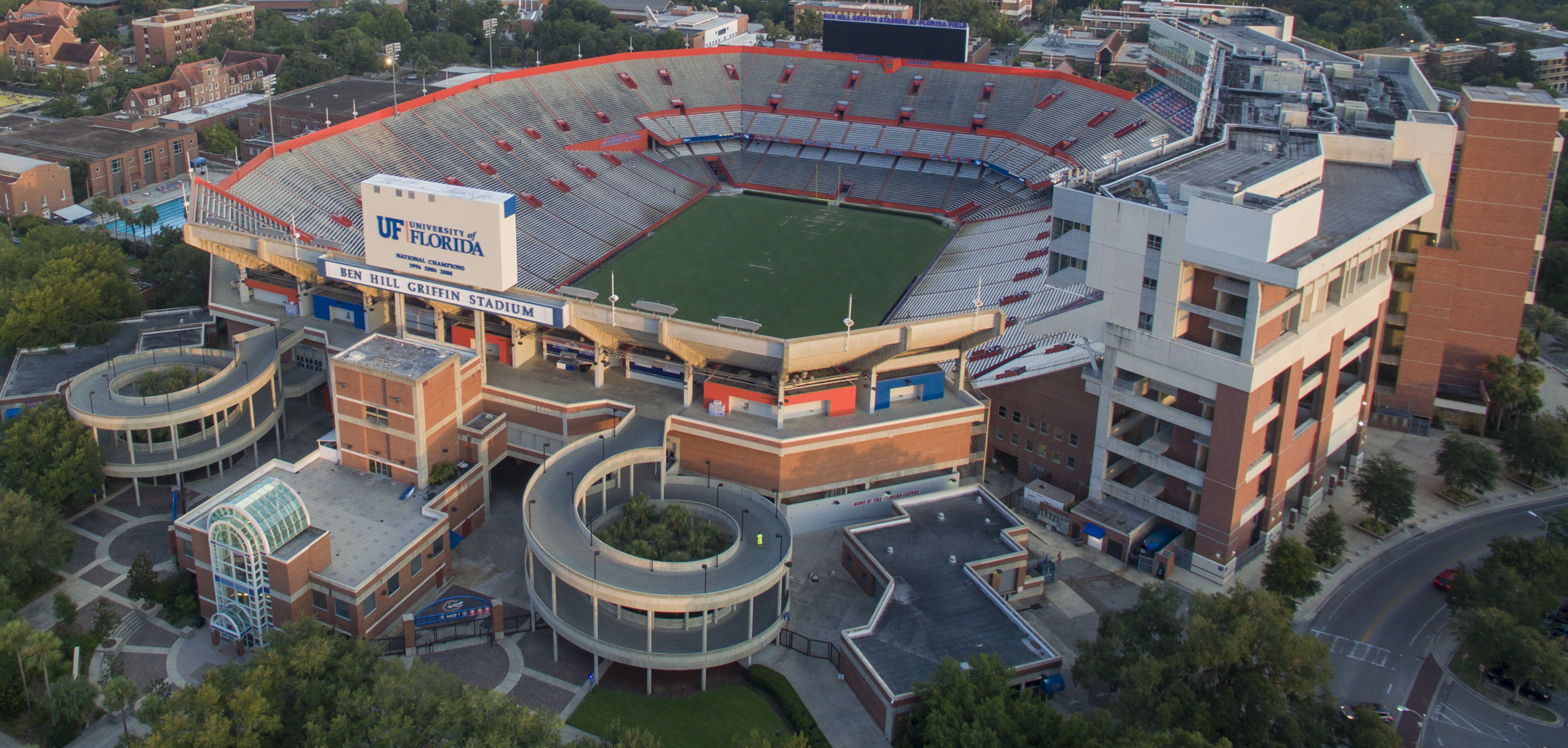
They say that playing in Ben Hill Griffin Stadium—better known as “The Swamp”—is like walking into a furnace of football chaos. And they’re right. This 88,000-seat cauldron in Gainesville, Florida, is one of the most brutal environments in all of college football, with a combination of relentless crowd energy, suffocating humidity, and a stadium design built for maximum discomfort for opponents. The Swamp’s unique structure traps noise, making it one of the loudest stadiums in college football history. The crowd feels like it is hovering over the field, with sound waves bouncing off the steep upper decks, creating an almost claustrophobic effect for visiting teams. The heat in Gainesville is already unbearable, but when combined with the raucous energy of 90,000 passionate Florida Gators fans, it turns into a living nightmare for opponents. There’s also a psychological element to playing in The Swamp. Legendary coach Steve Spurrier once famously said, “Only Gators get out alive.” That phrase has since become the unofficial slogan of the stadium, a warning to anyone daring to challenge the Gators on their home turf. The bright orange and blue, the roaring chants of ‘Orange!’ and ‘Blue!’, and the roaming live mascot, Albert the Alligator, make The Swamp an unparalleled spectacle in college sports. Few stadiums in the world have the ability to completely break an opposing team’s spirit before the game even starts. The Swamp does. And that’s what makes it one of the most unique, hostile, and unforgettable stadiums in all of college football.
9. The Horseshoe: Ohio Stadium's Architectural Brilliance
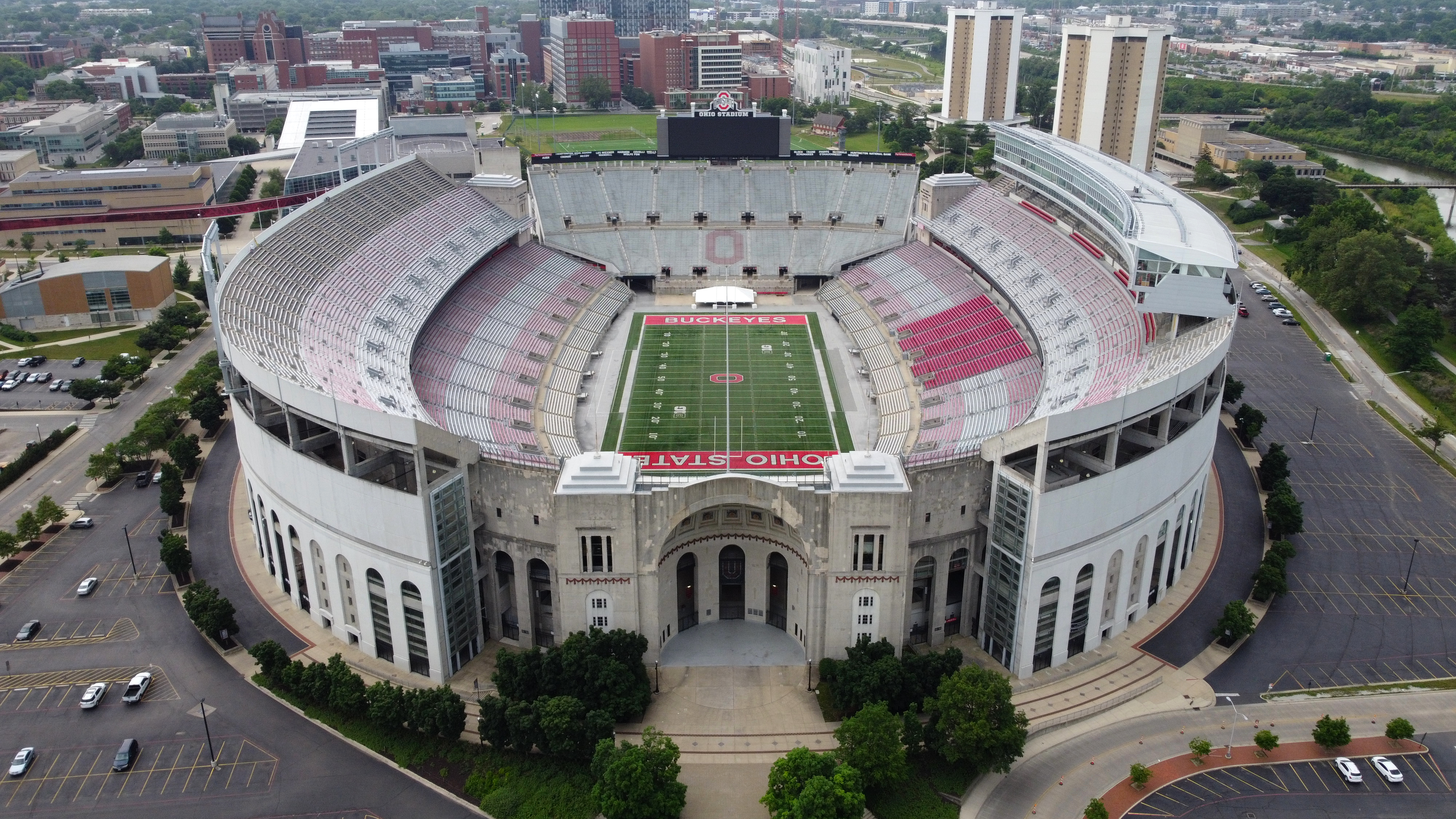
When you step into Ohio Stadium, better known as “The Horseshoe”, you’re not just entering a football stadium—you’re stepping into a monument of college football greatness. Built in 1922 and holding over 102,000 fans, Ohio Stadium is one of the largest, loudest, and most architecturally significant stadiums in the country. The iconic horseshoe shape isn’t just for looks—it was intentionally designed to amplify noise, and when over 100,000 Buckeyes fans are screaming in unison, the effect is thunderous and overwhelming. The open south end of the stadium offers a breathtaking view of the Columbus skyline, while the steep seating arrangement ensures that every fan feels like they are right on top of the action. But what truly makes The Horseshoe special is its unbreakable connection to tradition. From the Script Ohio marching band formation, to the legendary O-H! I-O! chant echoing through the stadium, to the sight of thousands of fans donning scarlet and gray, game days at Ohio Stadium are an immersive experience in pageantry and passion. Ohio Stadium isn’t just another football venue—it’s a cathedral of the sport, a place where history, architecture, and fan culture collide to create one of the most awe-inspiring environments in college football.
10. The Magic of Memorial Stadium: Home of the Cornhuskers
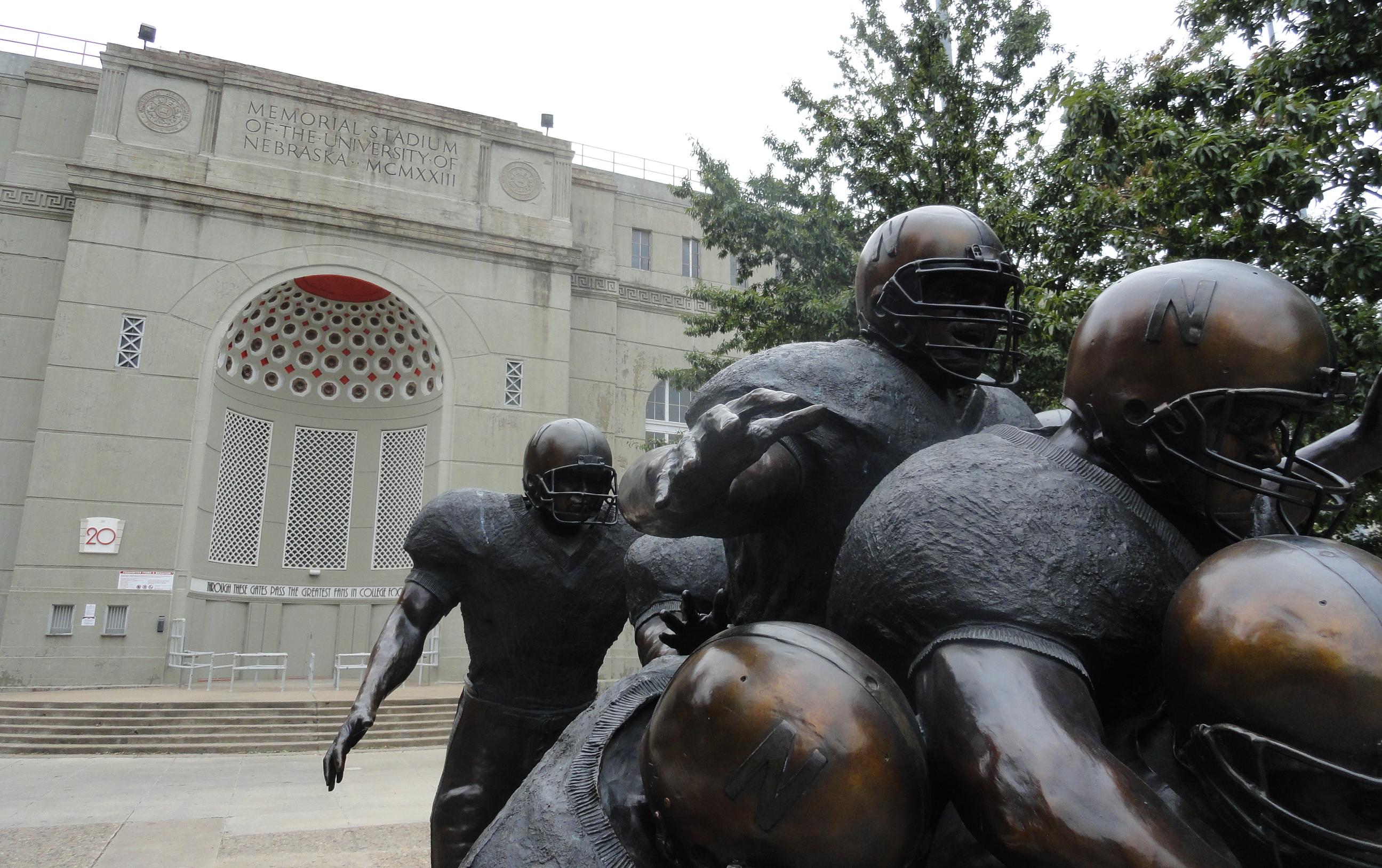
In Lincoln, Nebraska, there is one place where every seat is always filled, and that’s Memorial Stadium, home of the Nebraska Cornhuskers. With a sellout streak dating back to 1962, this stadium boasts one of the most loyal and passionate fanbases in the world. It doesn’t matter how well the team is performing—Memorial Stadium is always packed to the brim with fans who treat Nebraska football like a religion. This 85,000-seat cathedral is unlike any other because of the sheer community support that surrounds it. On game days, Lincoln transforms into one of the largest cities in Nebraska, as fans flood in to create an electric atmosphere that is as loud as it is intimidating. The “Sea of Red”, where thousands of fans don Husker-red attire, turns the stadium into a visually stunning spectacle. While many modern stadiums chase luxury, Memorial Stadium preserves the raw, classic feel of college football. It’s a place where the spirit of Big Ten football reigns supreme, where the echo of “GO BIG RED!” can be heard from miles away, and where every fall Saturday feels like a statewide holiday.
11. The Fortress on the Plains: Bill Snyder Family Stadium
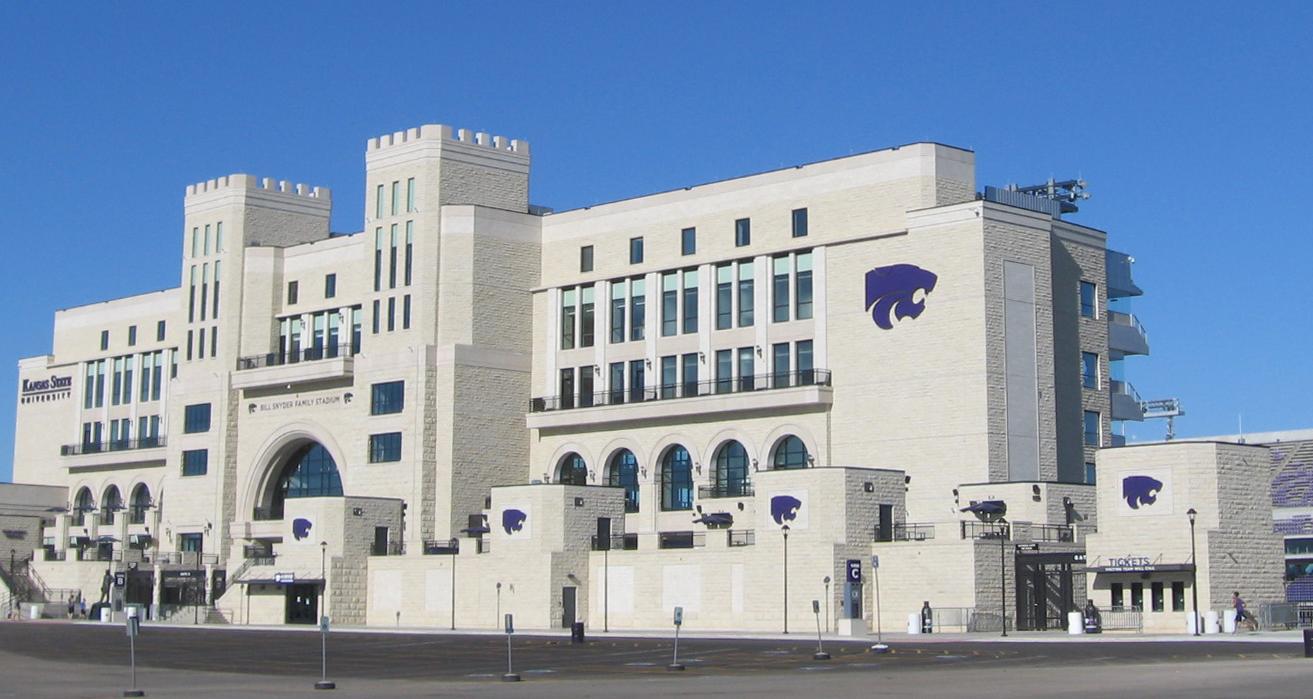
Rising from the Kansas prairie like a modern-day fortress, Bill Snyder Family Stadium at Kansas State University is a testament to resilience, perseverance, and the unwavering spirit of a football program that defied the odds. Once considered an afterthought in college football, K-State transformed itself into a powerhouse, and at the center of that transformation was this very stadium. When it was first constructed in 1968, Bill Snyder Family Stadium (then called KSU Stadium) had no upper decks, no frills, and little intimidation factor. However, under the legendary coach Bill Snyder, who took a struggling program and turned it into a winner, the stadium grew with the team. Today, it boasts a capacity of 50,000 roaring fans, whose deep loyalty and purple-clad presence turn the venue into a true stronghold on game days. What makes Bill Snyder Family Stadium truly unique isn’t just its imposing modern upgrades—including massive video boards, cutting-edge training facilities, and a fan-friendly layout—but rather the unbreakable bond between the team and its supporters. The Wildcats' passionate fanbase is one of the most dedicated in college football, creating an environment that feels more like a homecoming than a game. From the thunderous chants of “K-S-U!” to the stadium’s breathtaking night-game settings, this venue is not just a field—it’s a symbol of triumph, unity, and the relentless pursuit of greatness.
12. The Jungle: Tiger Stadium's Nighttime Mystique
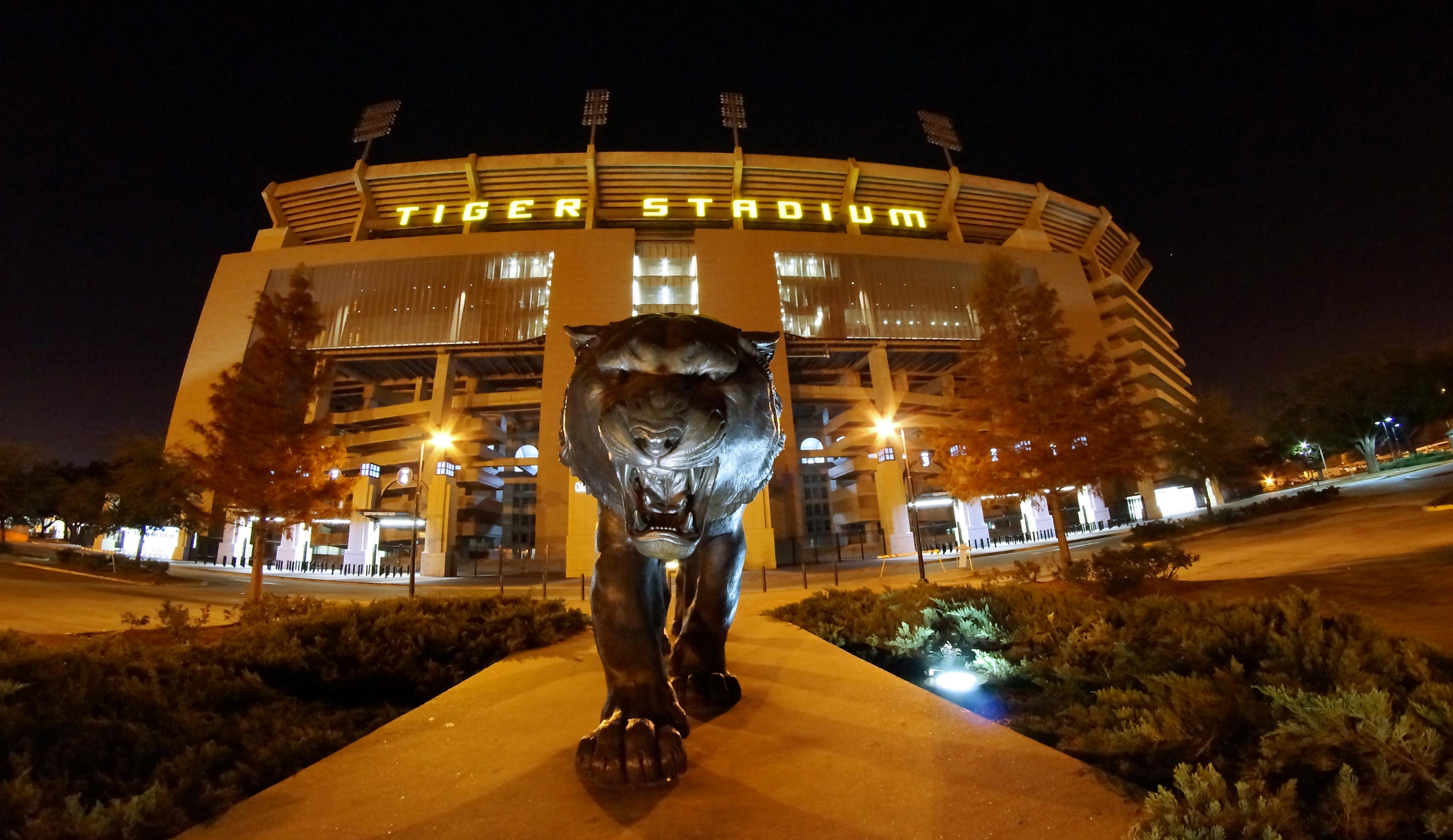
There is loud, and then there is Tiger Stadium at night—an entirely different beast. When the sun sets over Baton Rouge, the legendary home of the LSU Tigers transforms into one of the most intimidating environments in all of college football. Tiger Stadium at night isn’t just a venue—it’s an experience, a relentless, deafening, spine-tingling experience that has left opposing teams in disarray for decades. With a staggering capacity of over 102,000, Tiger Stadium—affectionately known as “Death Valley”—has hosted some of the most thrilling and chaotic moments in college football history. The stadium’s design traps sound, ensuring that the noise lingers and amplifies, making it nearly impossible for visiting teams to communicate. The result? A game-day atmosphere so overwhelming that it has been measured on the Richter scale—yes, Tiger Stadium has literally caused earthquakes. But it’s more than just noise—it’s the energy, the history, and the unmistakable LSU culture that sets this stadium apart. The deep gold and purple sea of fans, the legendary "Callin' Baton Rouge" pregame anthem, and the visceral intensity of the Tiger Band's "Neck" chant create a spectacle that is as much a festival as it is a football game. Opponents don’t just come here to play; they enter a cauldron of emotion and passion that few survive unscathed.
13. The Grand Ol' Lady: Harvard Stadium's Historical Significance
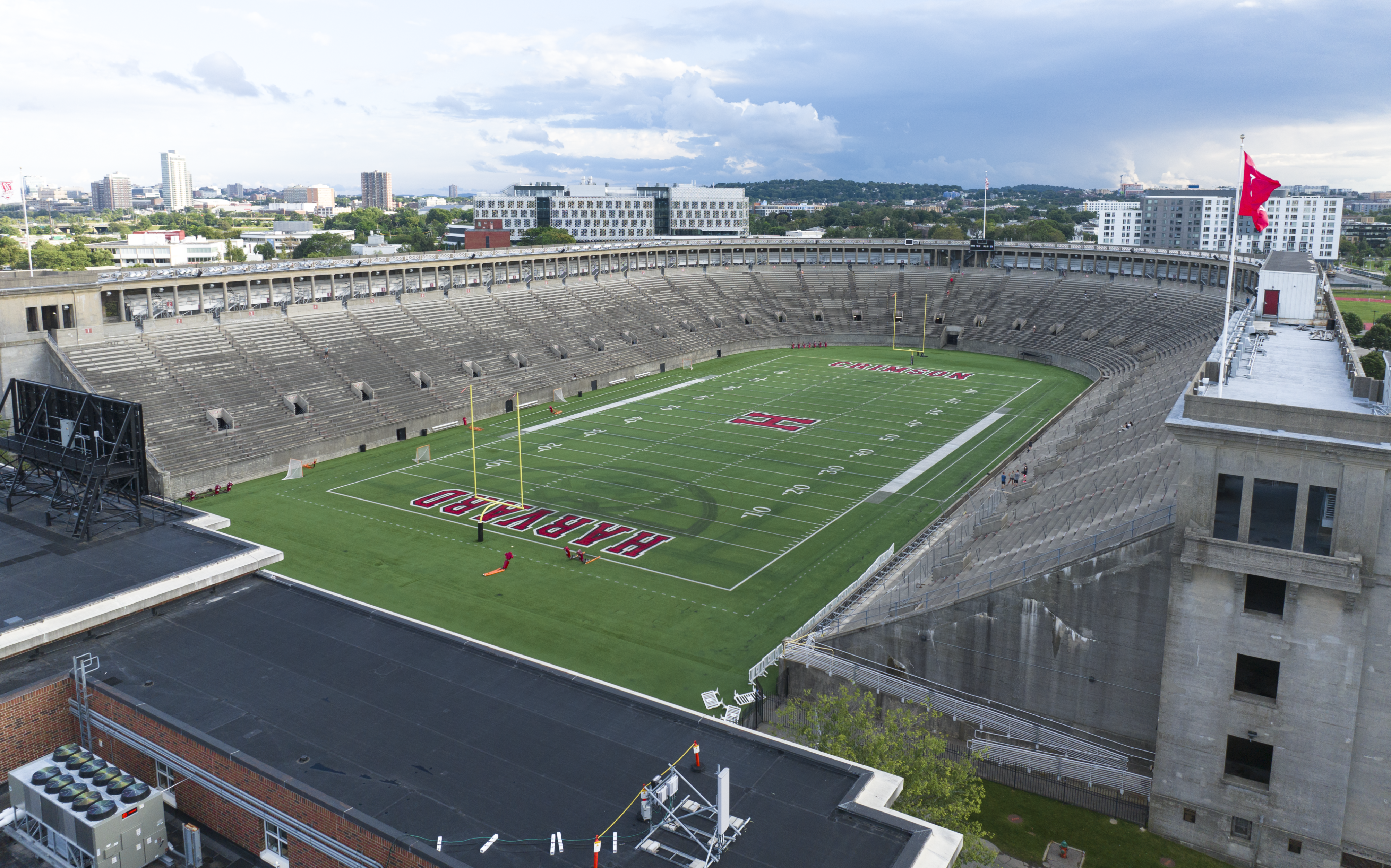
Built in 1903, Harvard Stadium is not just a sports venue—it’s a living museum, a monument to the origins of American football, and one of the most influential stadiums ever built. Located on the historic Harvard University campus in Cambridge, Massachusetts, this horseshoe-shaped coliseum is the oldest permanent concrete stadium in the world and the first of its kind in the United States. Before the rise of modern football cathedrals, Harvard Stadium pioneered the concept of stadium architecture. It was the first collegiate stadium to use reinforced concrete, a revolutionary technique that would lay the foundation for future stadiums worldwide. Without Harvard Stadium, we may not have the colossal, bowl-like stadiums we know today.But beyond its architectural significance, Harvard Stadium remains a symbol of tradition, intellect, and athletic excellence. There are no massive video boards, retractable roofs, or high-tech luxury suites—instead, fans sit on century-old stone benches, embracing the pure essence of the game. The towering Greek and Roman-style columns stand as a silent reminder of football’s classical origins, making every game feel like a page torn from history.
14. The Wave: Kinnick Stadium's Heartfelt Tradition
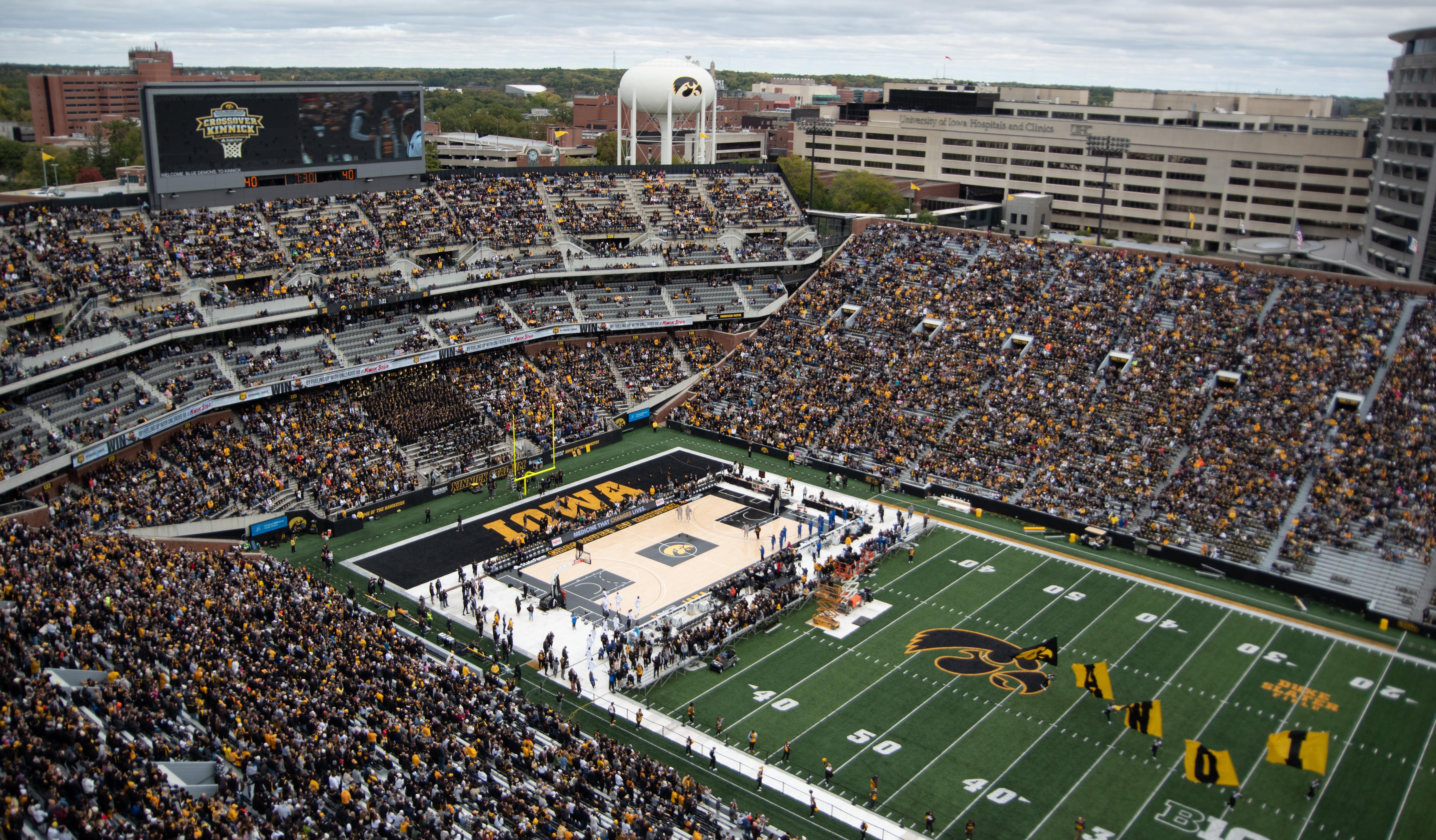
If college football has a single tradition that can bring an entire stadium to tears, it’s The Wave at Kinnick Stadium. Located in Iowa City, Iowa, this 70,000-seat stadium is home to the Iowa Hawkeyes, but more importantly, it is home to one of the most touching gestures in all of sports. At the end of the first quarter of every home game, everyone in the stadium—players, coaches, referees, and fans—turns toward the University of Iowa’s Stead Family Children’s Hospital, located just beyond the stadium’s east stands. In unison, they wave to the children inside, who, from their hospital rooms, return the wave with smiles and tears. It’s a moment of unity, compassion, and perspective that transcends football itself.Kinnick Stadium, built in 1929, might not have the largest capacity or the most high-tech features, but it has a heart unlike any other stadium in the world. When packed with Hawkeye faithful dressed in black and gold, the stadium generates an intense home-field advantage, making it one of the toughest places to play in the Big Ten. Yet, amid the roaring crowd and fierce battles on the field, The Wave reminds us that some things are bigger than the game. This stadium, named after Iowa’s only Heisman Trophy winner, Nile Kinnick, embodies the grit, pride, and resilience of the Midwest. And while its traditions of hard-nosed football and unwavering fan support make it a legendary venue, it is The Wave that has etched Kinnick Stadium into the hearts of millions. It is proof that college stadiums are more than just structures—they are places where humanity shines, where sports unite communities, and where moments that truly matter unfold.
15. The Rock: Neyland Stadium's Storied Past
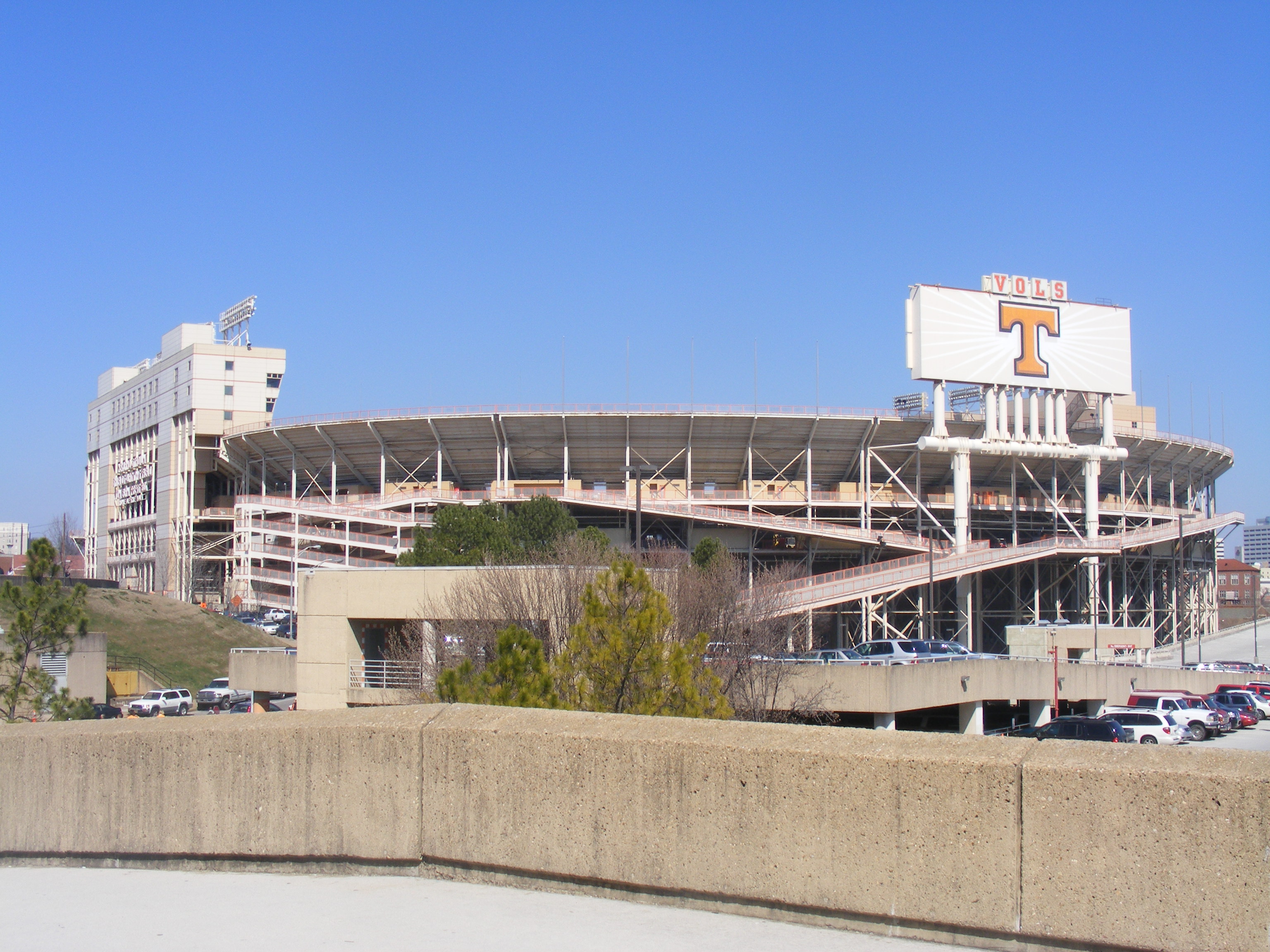
Towering over the Tennessee River in Knoxville, Tennessee, Neyland Stadium is more than just a football venue—it is the heartbeat of the University of Tennessee and one of the most legendary cathedrals of college football. With a staggering capacity of over 101,000 fans, Neyland Stadium stands as one of the largest stadiums in the United States, creating an atmosphere that is as electrifying as it is intimidating. When the Vols take the field and the stadium erupts in a sea of orange, Neyland transforms into one of the most formidable home-field advantages in all of sports. Named after General Robert Neyland, the iconic coach who shaped Tennessee football into a national powerhouse, the stadium’s history runs as deep as the Tennessee River that flows beside it. Opened in 1921, Neyland Stadium has seen the Vols rise to national prominence, hosting countless historic games, legendary players, and unforgettable moments that are etched into the very fabric of college football. From Peyton Manning’s dominance in the 1990s to Tennessee’s 1998 National Championship run, Neyland has been the stage for some of the most celebrated chapters in SEC history.
16. The Fortress of Solitude: Michie Stadium's Scenic Splendor
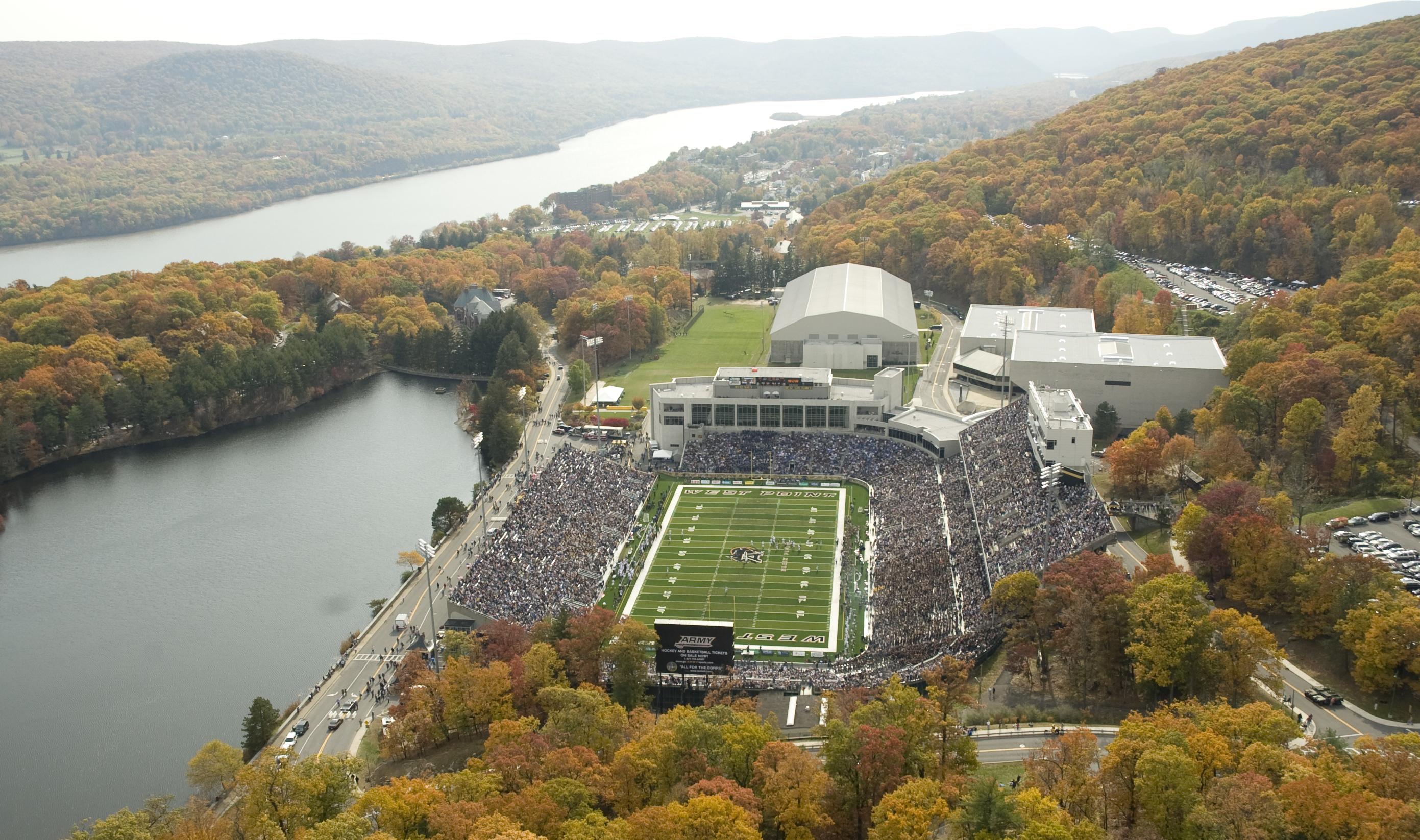
Nestled high above the majestic Hudson River, Michie Stadium at the United States Military Academy at West Point is unlike any other college football venue in the world. Rather than towering steel structures or colossal seating capacities, this stadium’s true magic lies in its breathtaking natural setting and the profound sense of honor, tradition, and discipline that echoes through its stone walls. Opened in 1924, Michie Stadium is one of the oldest continuously used stadiums in college football and is consistently ranked among the most scenic sports venues in America. The field is surrounded by rolling hills and dense forests, making fall game days an awe-inspiring spectacle, as the foliage turns brilliant shades of red, orange, and gold, reflecting off the Hudson River below. The stadium’s historic limestone architecture, inspired by West Point’s gothic-style buildings, gives it the appearance of a medieval fortress rather than a modern sports venue—fitting for an institution that has produced some of the greatest military leaders in U.S. history. But what truly sets Michie Stadium apart is the unwavering pageantry and patriotism that fills the air on game days. From the stirring performance of the Army Band to the thunderous cadet march-on, every tradition at West Point embodies the values of duty, honor, and country. And when the Black Knights take the field, backed by a brigade of future military officers in the stands, it’s not just about football—it’s about representing something much bigger than the game itself.
17. The Palace on the Prairie: Gaylord Family Oklahoma Memorial Stadium
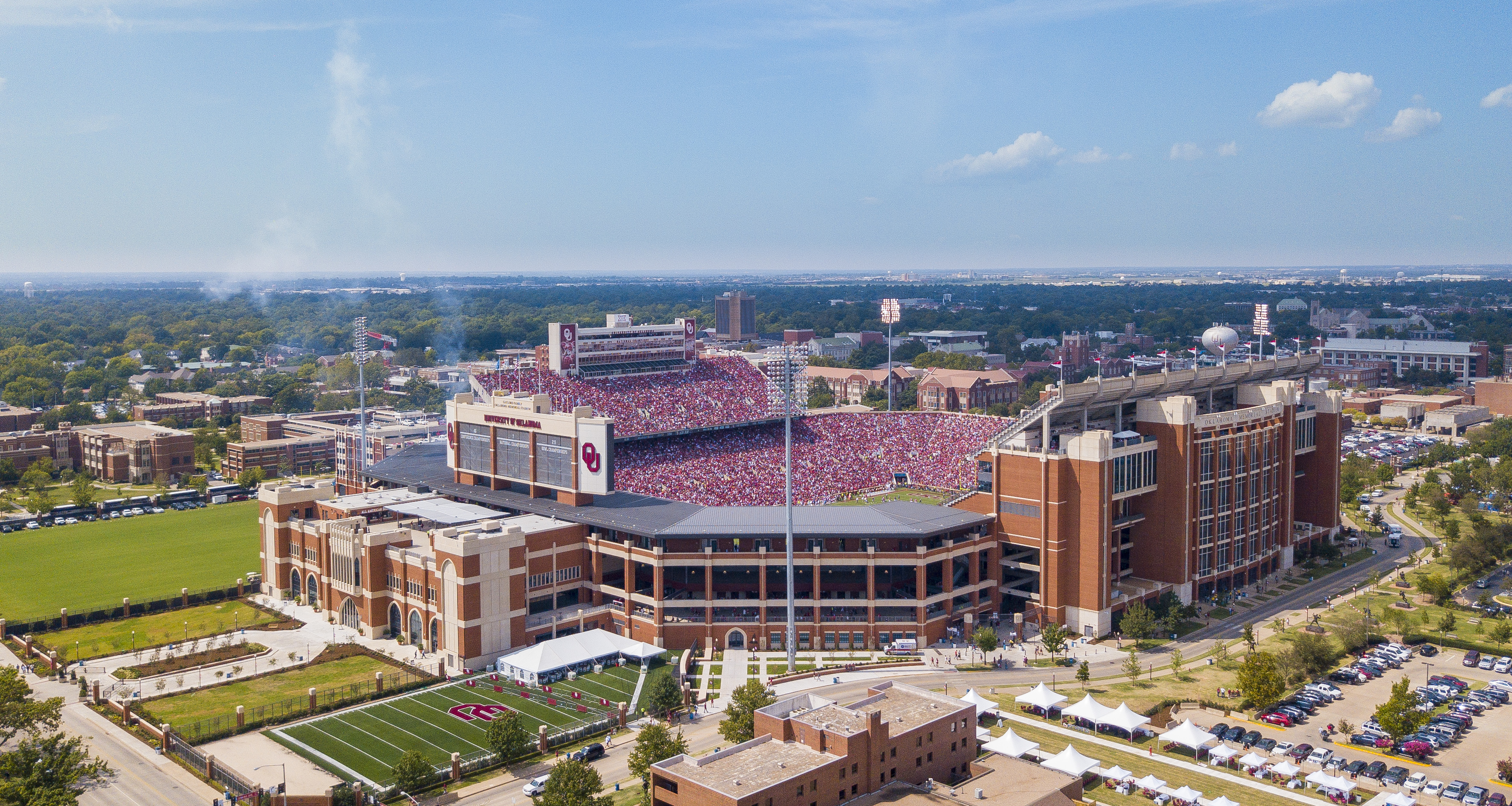
Few stadiums in college football carry the sheer grandeur, history, and tradition of Gaylord Family Oklahoma Memorial Stadium, home of the Oklahoma Sooners. Dubbed the "Palace on the Prairie," this venue is a true collegiate coliseum, standing tall as a monument to the Sooners’ dominance and their place in college football royalty. Located in Norman, Oklahoma, this 80,000+ seat behemoth is one of the most intimidating venues in the sport. From the moment you approach the stadium, its stunning red-brick façade and towering white columns reflect the grandeur of Sooner Nation. Unlike the typical steel-and-concrete stadiums that dot the landscape, Gaylord Family Oklahoma Memorial Stadium was designed to be a showpiece, blending timeless architecture with cutting-edge facilities that make it feel more like a historic landmark than just a football venue. Inside, the atmosphere is electrifying. The roar of 80,000+ crimson-clad fans, the unrelenting booms of “Boomer Sooner” from The Pride of Oklahoma marching band, and the thundering stampede of the Sooner Schooner racing across the field create a game-day experience unlike any other. The stadium's vertical seating arrangement, which puts fans almost on top of the field, makes it one of the loudest and most intimidating environments for opposing teams. When the Sooners are rolling, the stadium shakes with energy, making it a true fortress on the plains.
18. Frank Clair Stadium (TD Place Stadium) – University of Ottawa (Canada)
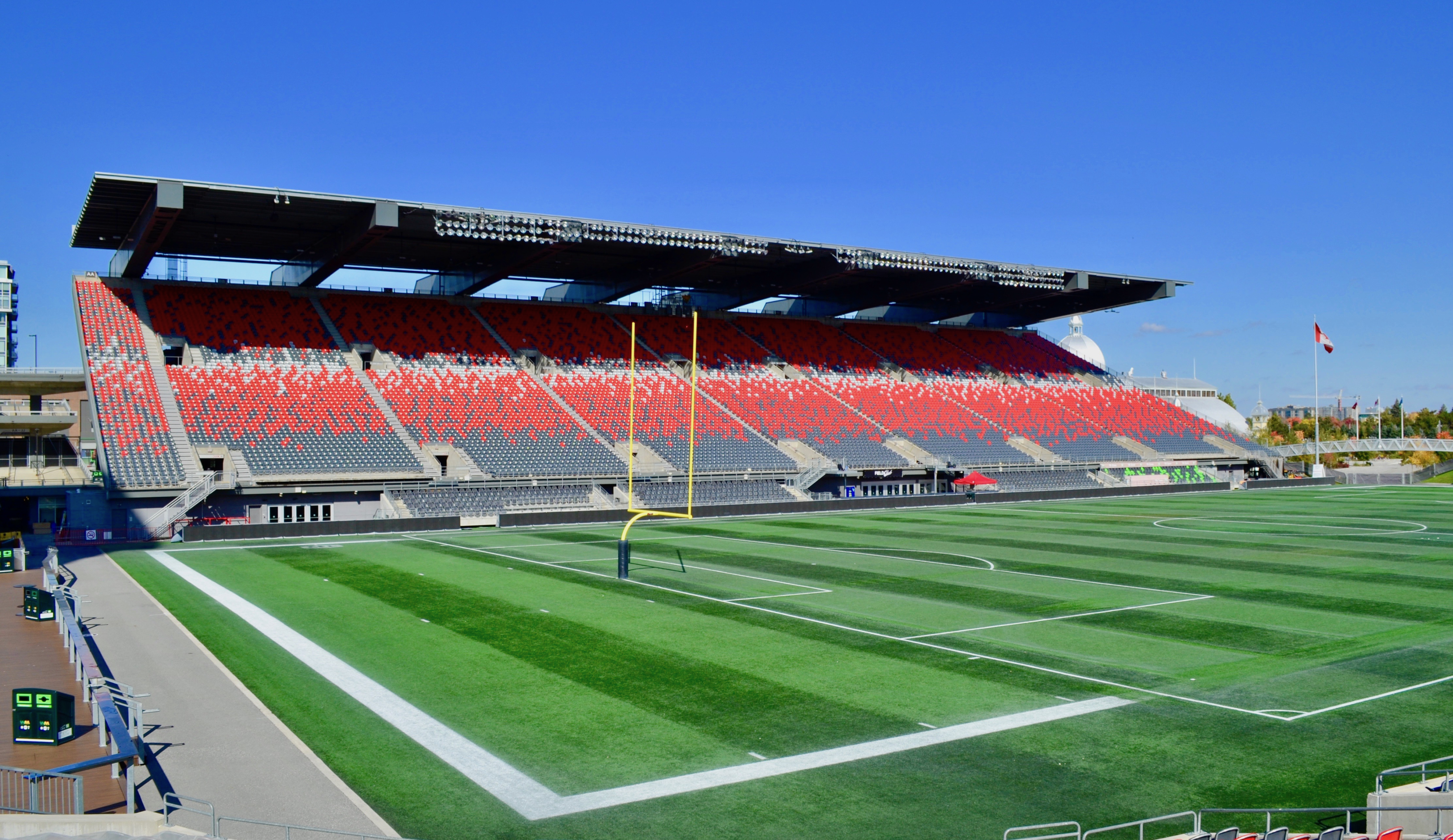
Situated in the heart of Canada’s capital, Frank Clair Stadium—now known as TD Place Stadium—is one of the most unique college stadiums in North America, blending history, innovation, and a stunning urban backdrop. Home to the University of Ottawa Gee-Gees football team, the stadium stands as an architectural marvel, seamlessly integrating century-old grandstands with state-of-the-art modern facilities. What makes TD Place truly distinctive is its horseshoe design, which offers an open-end view of Lansdowne Park and the Rideau Canal, a UNESCO World Heritage Site. The stadium is deeply embedded within Ottawa’s cultural and entertainment district, creating a game-day atmosphere that spills out into the city’s streets, making it unlike any other collegiate venue. Originally built in 1908, the stadium has undergone multiple renovations, most notably a $290 million transformation in 2014 that preserved historic grandstands while introducing contemporary seating, VIP lounges, and eco-friendly construction elements. The unique fusion of old and new allows fans to experience a piece of history while enjoying cutting-edge stadium technology, including high-definition LED screens and an advanced turf system designed for Canadian winters.
19. Skelly Field at H.A. Chapman Stadium – Tulsa’s Hidden Gem
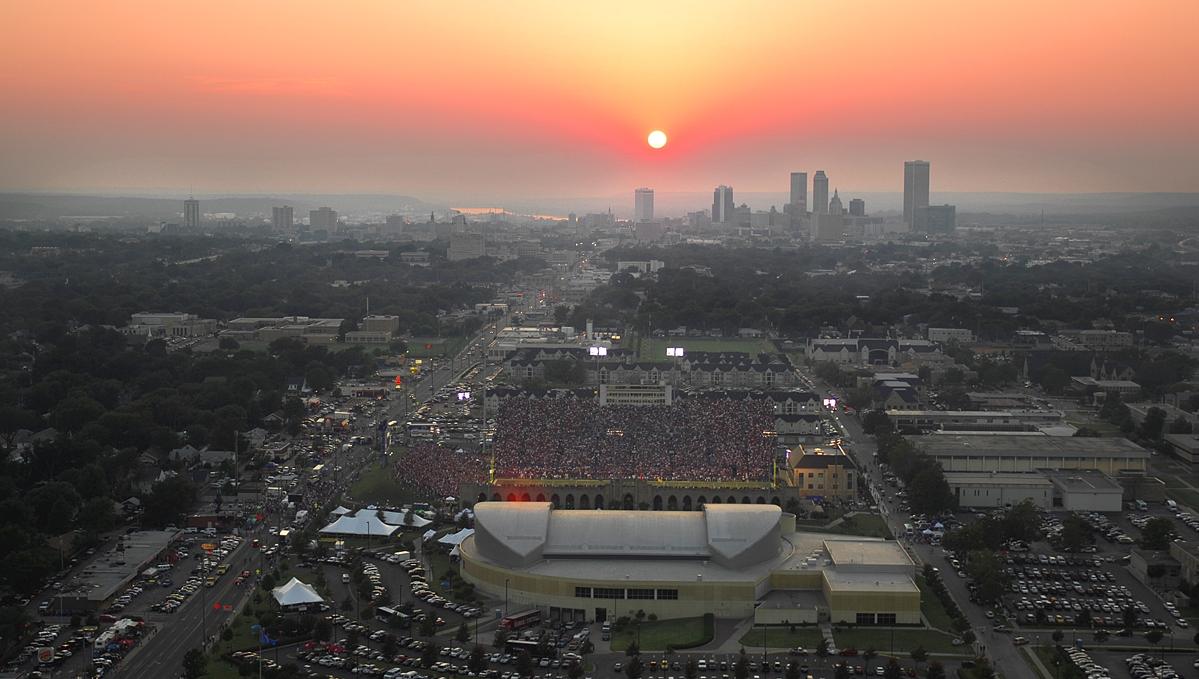
Though often overshadowed by larger college football venues, H.A. Chapman Stadium at the University of Tulsa proves that size isn’t everything when it comes to creating an incredible game-day atmosphere. Built in 1930 as Skelly Field, this 30,000-seat stadium is one of the oldest continuously operating college stadiums in the country. Its classic architecture, intimate seating, and unexpectedly loud fanbase make it one of the best-kept secrets in college football. The stadium’s recent renovations have modernized its facilities while preserving its historic charm, adding premium seating, LED lighting, and upgraded locker rooms. What truly sets this stadium apart, however, is its setting within Tulsa’s historic neighborhoods, making it one of the few college stadiums where fans tailgate in the streets among century-old buildings before heading into a raucous football environment.
20. Franklin Field – The Birthplace of College Football Stadiums
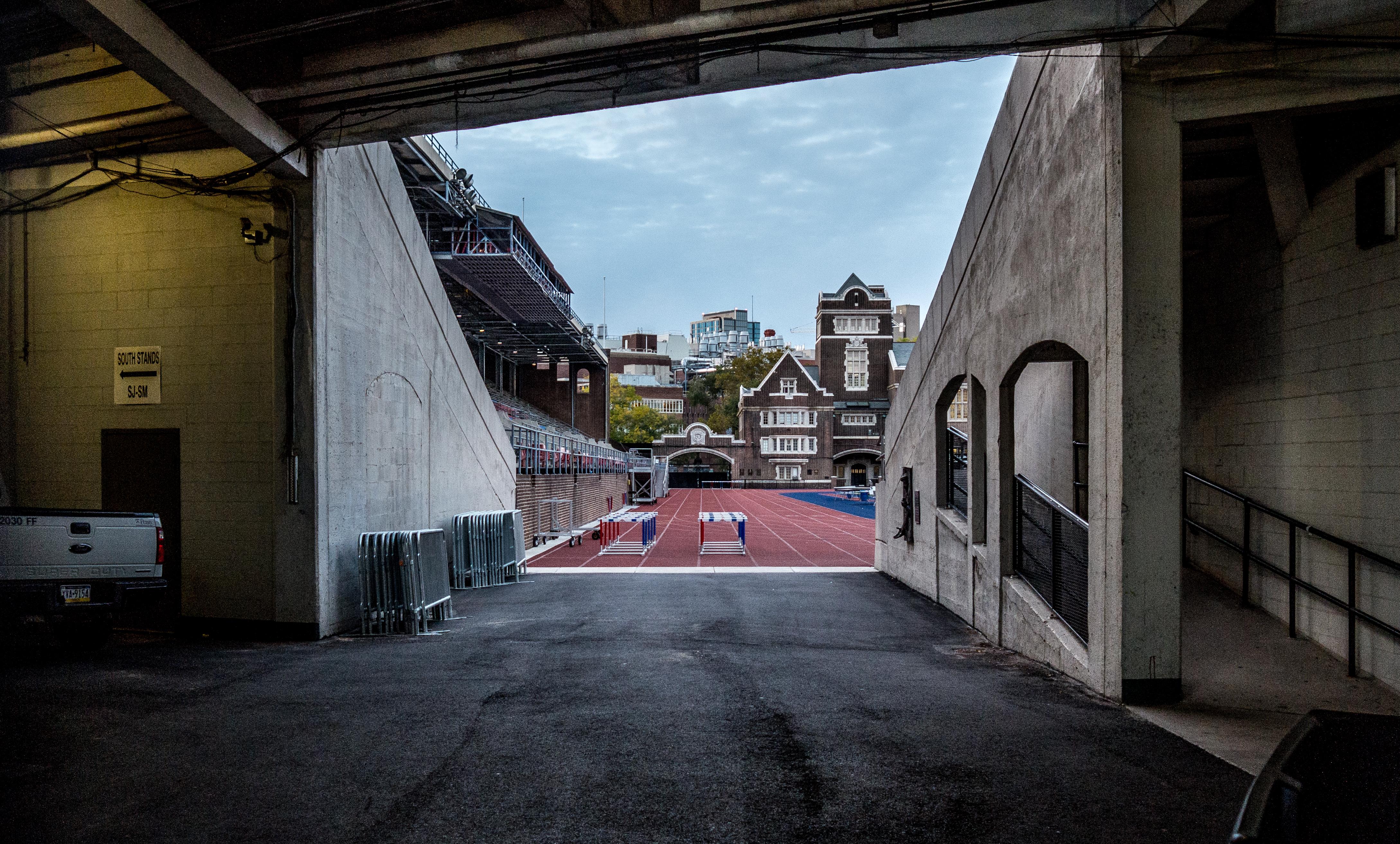
If there’s one stadium that every college football fan should visit at least once, it’s Franklin Field. Built in 1895, it holds the distinction of being the oldest college football stadium in continuous operation. But that’s just the beginning. Franklin Field was also the site of the first-ever scoreboard, the first-ever radio broadcast of a football game, and it played host to the Philadelphia Eagles’ 1960 NFL Championship season. Despite its age, Franklin Field has stood the test of time, maintaining its iconic horseshoe design while undergoing various renovations to preserve its historical integrity. With a seating capacity of 52,958, it remains a fortress for Penn Quakers football and hosts the world-famous Penn Relays, one of the most prestigious track and field events in the world.
21. Maracanãzinho – Brazil’s Collegiate Sporting Crown Jewel
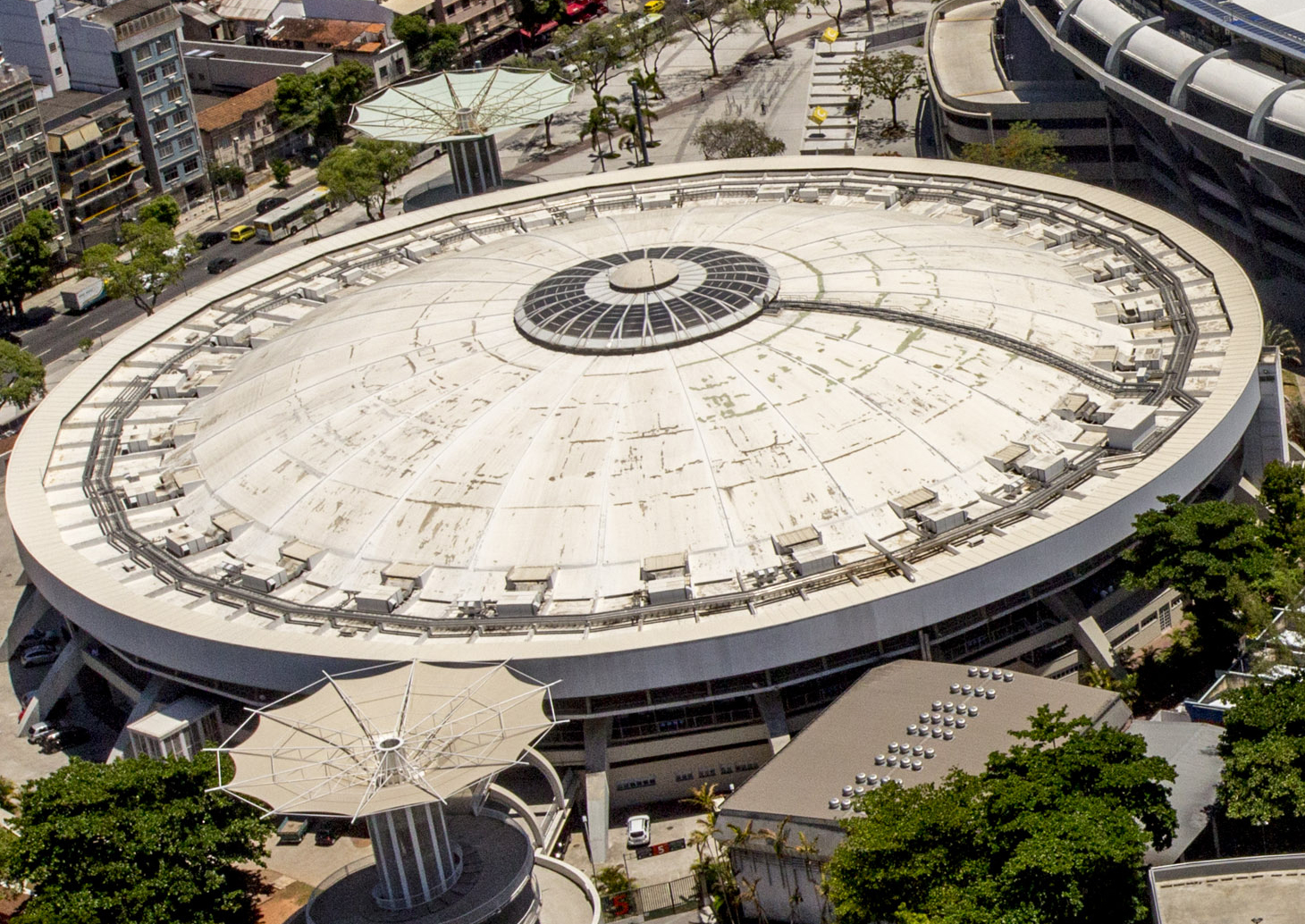
While football (soccer) reigns supreme in Brazil, college volleyball and indoor sports have a home like no other in Maracanãzinho, the smaller sibling of the world-famous Maracanã Stadium. Located within the State University of Rio de Janeiro’s campus, this stadium has played host to countless South American collegiate championships, world-class volleyball matches, and even international tournaments like the Olympics and FIFA Futsal World Cup. With a 20,000-seat capacity, Maracanãzinho creates an electrifying and intimate setting for sports that rely heavily on crowd energy. Unlike traditional outdoor college stadiums, this indoor colosseum brings the crowd right onto the court, creating an intensity unmatched in collegiate sports worldwide.
22. Stade Sébastien Charléty – Where Academics and Athletics Collide
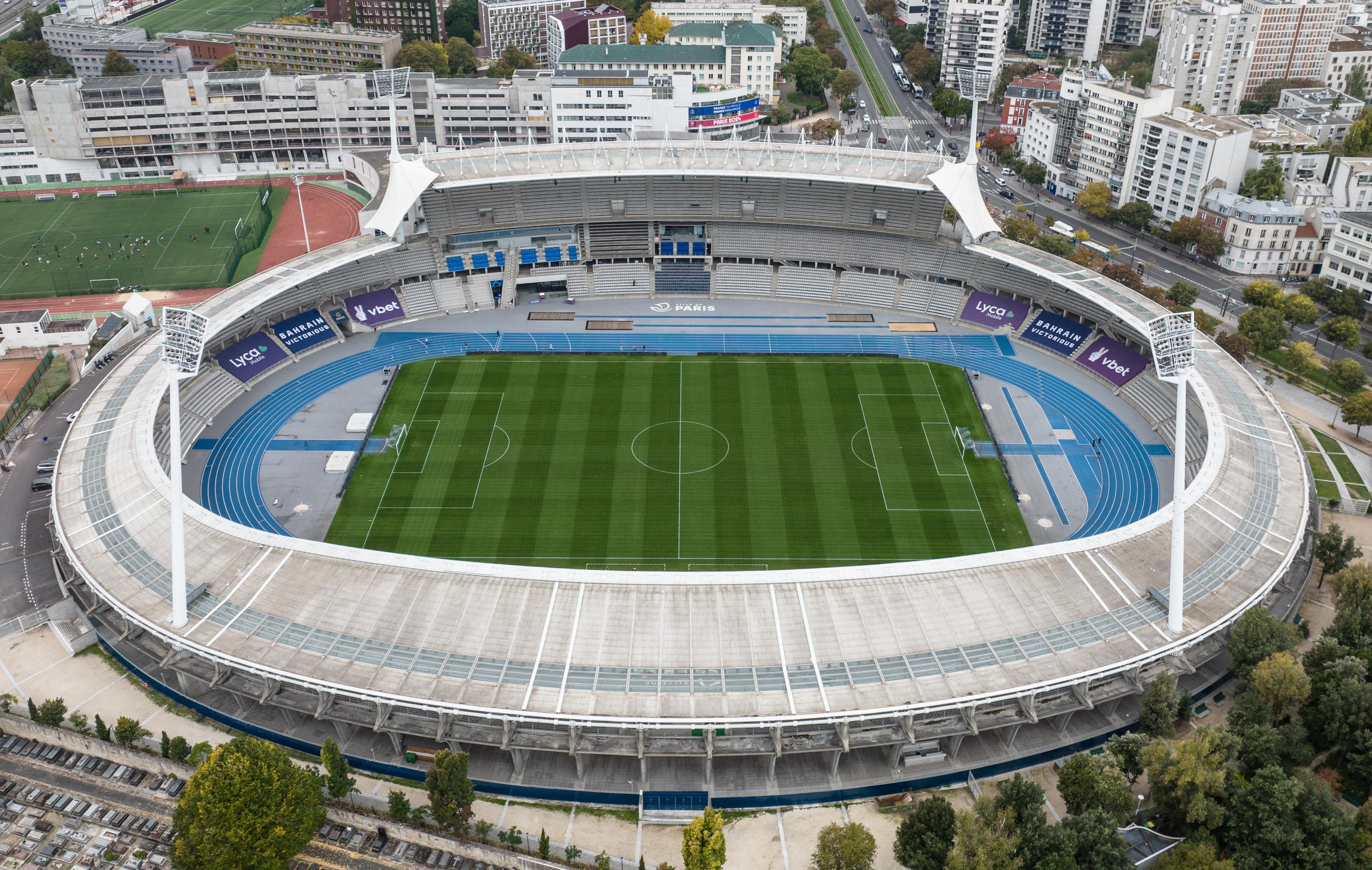
Located in the heart of Paris, Stade Sébastien Charléty isn’t just a sports venue; it’s an architectural masterpiece. This 20,000-seat stadium serves as the home field for Paris-Saclay University, one of France’s premier research institutions, blending elite academia with elite athletics. Unlike many college stadiums built for a single sport, Charléty hosts football, track and field, and rugby, making it one of Europe’s most versatile college sports venues. Its ultramodern glass-and-steel design, combined with a sunken playing field and open-air stands, gives spectators panoramic views of the Paris skyline, creating one of the most stunning game-day backdrops in the world.
23. Varsity Stadium – The Heart of Canadian College Football
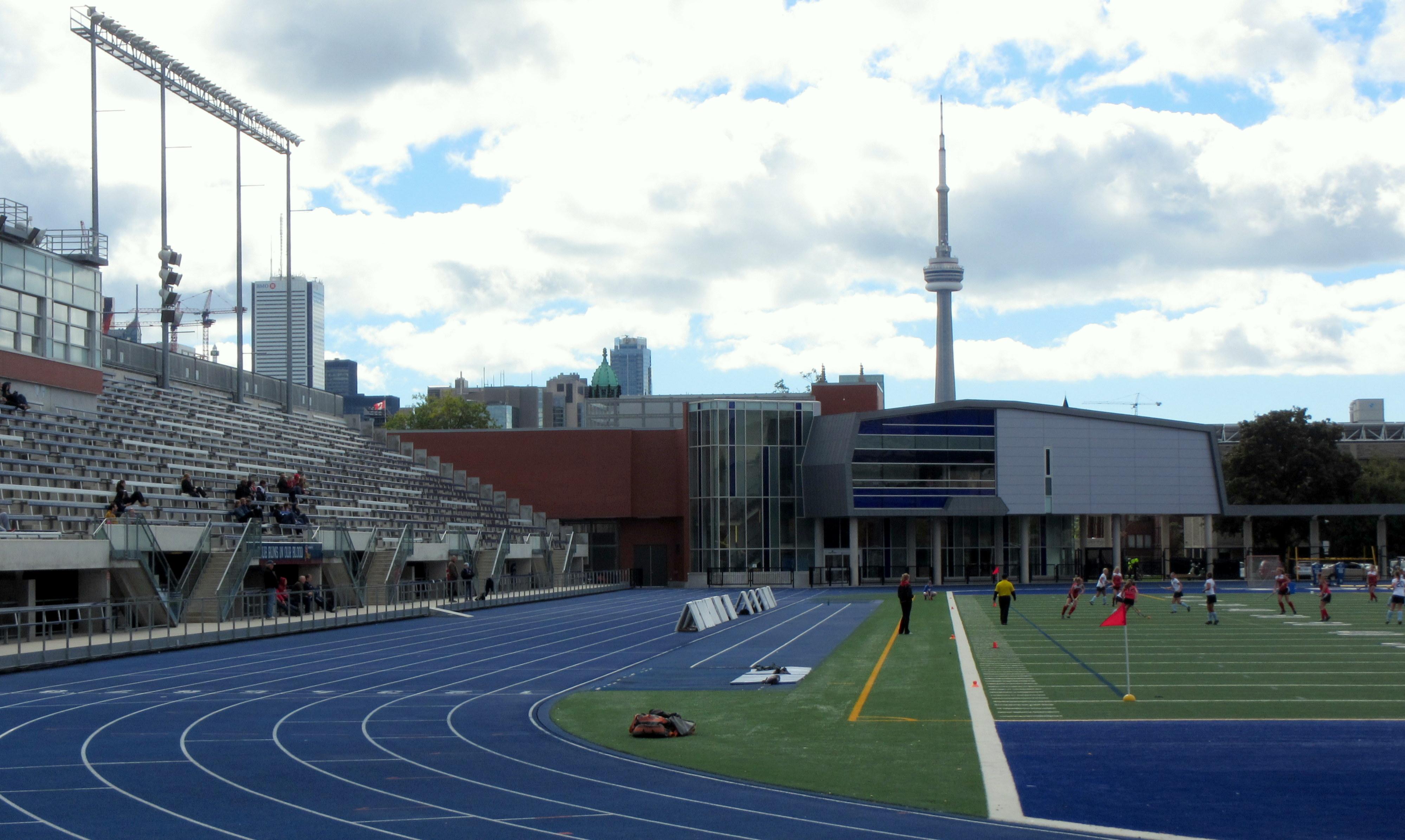
Nestled within downtown Toronto, Varsity Stadium is the birthplace of Canadian college football, with a history stretching back to 1898. While its modern-day version seats just 5,000 fans, this historic venue once held nearly 27,000 people and was home to one of the most fiercely contested rivalries in the early days of football: Toronto vs. McGill. Varsity Stadium’s location, surrounded by the high-rises of Canada’s largest city, gives it an urban feel rarely found in collegiate athletics. While it’s been downsized over the years, its historic significance, unique location, and deeply ingrained traditions make it a must-visit for fans of both American and Canadian college sports.
24. Stadion Cracovii – Poland’s Premier Collegiate Stadium
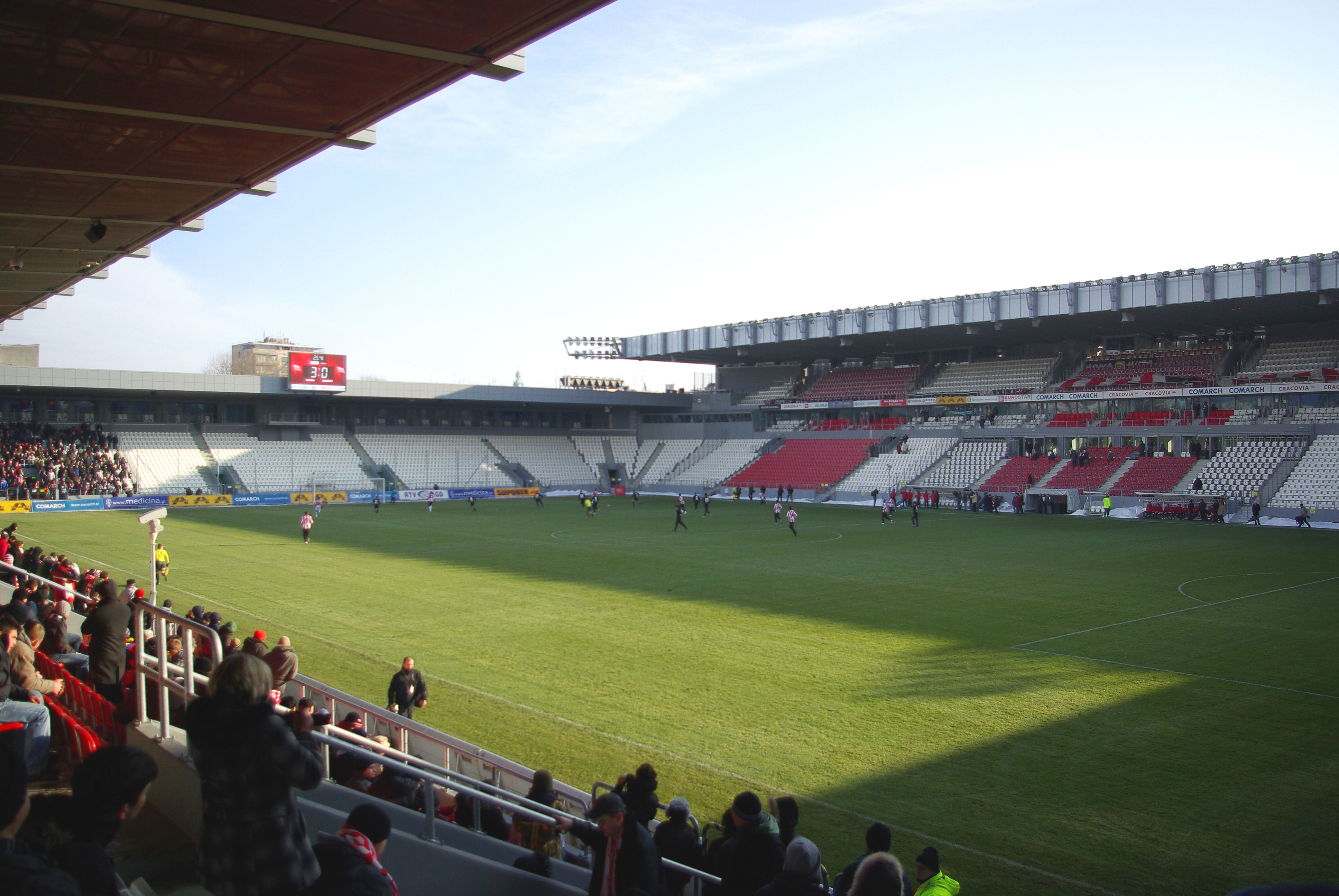
Poland might not be the first place that comes to mind when thinking about college stadiums, but Stadion Cracovii proves otherwise. Situated within the University of Physical Education in Kraków, this 15,000-seat stadium serves as a hub for Polish university athletics, particularly soccer and track & field events. Its sleek, modern design, featuring semi-transparent panels and open-air walkways, creates a futuristic yet welcoming atmosphere. With student-led chants, choreographed displays, and deep-rooted traditions, Cracovii boasts an energy level that rivals even the best college stadiums in North America.
25. Cape Town Stadium – Africa’s Ultimate Collegiate Battleground

Most famous for hosting FIFA World Cup matches, Cape Town Stadium is also a thriving college sports venue, playing host to University of Cape Town’s rugby and soccer programs. With a capacity of 55,000, it is one of the largest stadiums in the world to regularly host collegiate matches. But what truly sets Cape Town Stadium apart is its jaw-dropping location. Nestled between Table Mountain and the Atlantic Ocean, it provides arguably the most stunning natural scenery of any college stadium on earth. Combine that with some of the most passionate student sections in South African sports, and you have a stadium experience unlike any other.
26. Ohio University’s Peden Stadium – A Hidden Gem on the Water
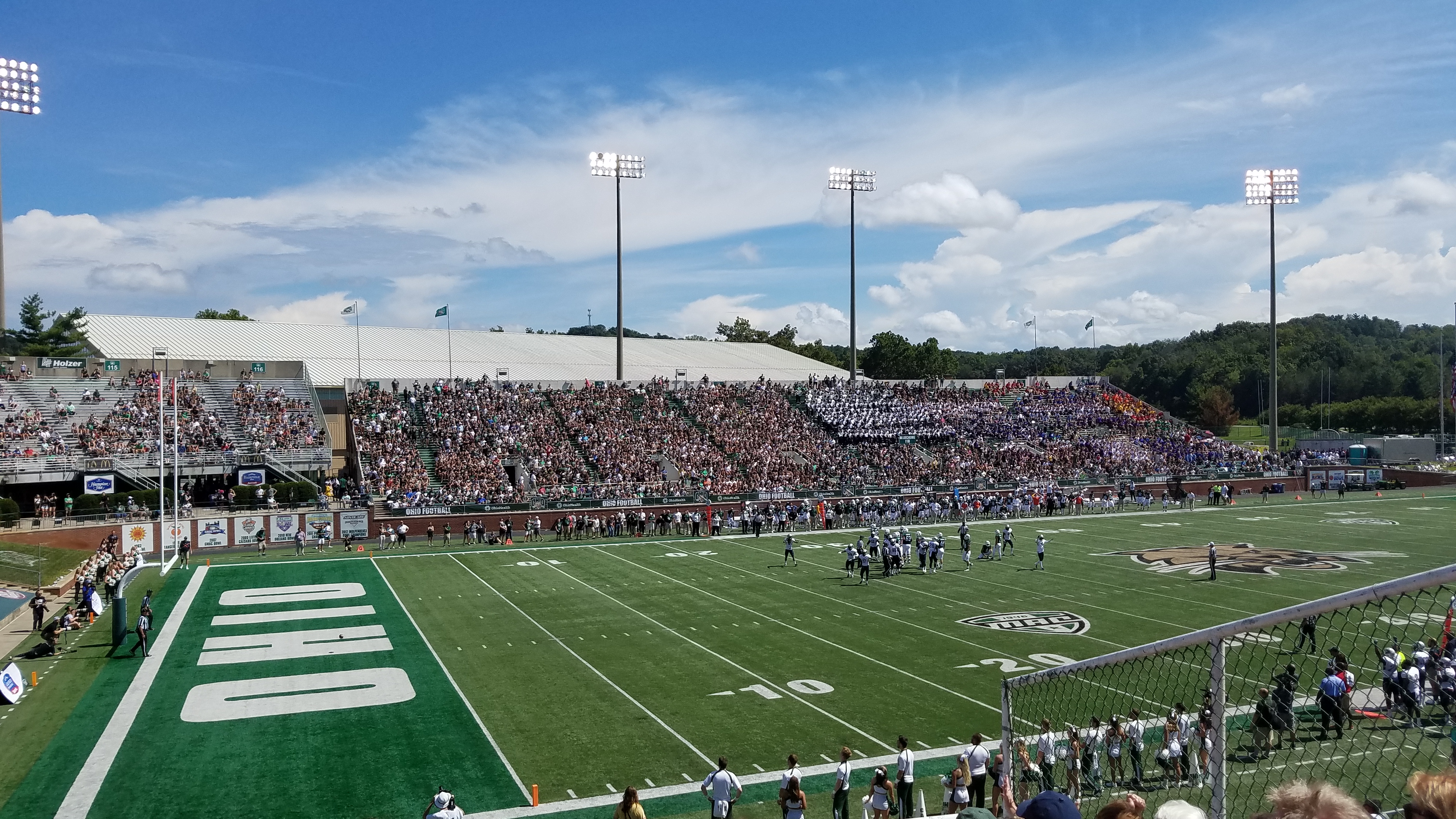
Peden Stadium isn’t just unique because of its age (built in 1929); it’s unique because it sits directly on the Hocking River, creating an unparalleled "riverbank stadium experience." Whether it's students arriving via kayak or tailgaters setting up along the river, no other college football stadium in the U.S. has such an intimate water-side setting. With just 27,000 seats, it’s one of the smaller FBS stadiums, but what it lacks in size, it makes up for in character. The stadium’s classic horseshoe design, stone entrance gates, and unparalleled fall foliage views make it a hidden architectural treasure in the college football world.
27. Stadion Feyenoord (De Kuip) – The Netherlands' Collegiate Powerhouse
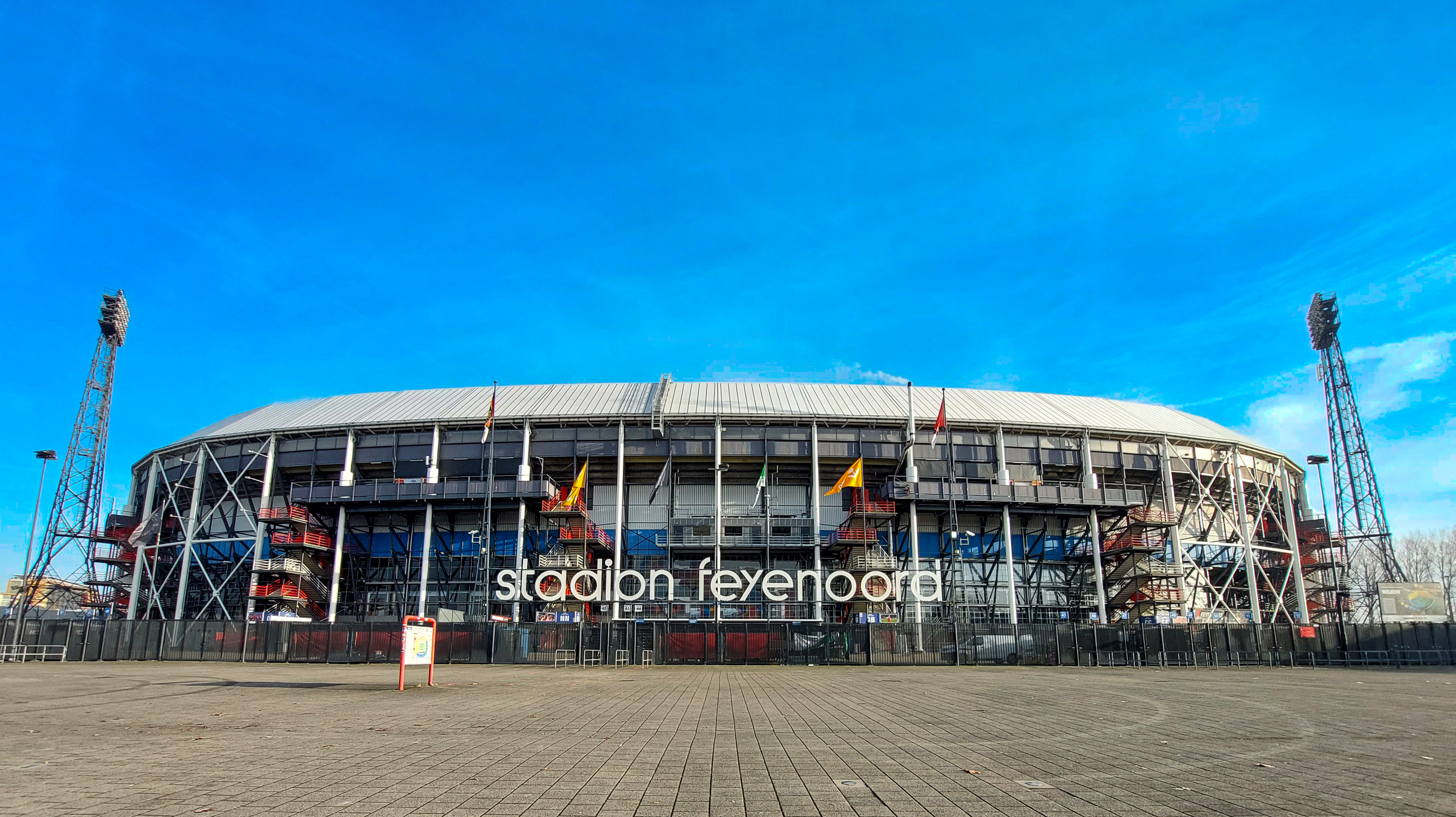
Known as "De Kuip", this 51,000-seat stadium is one of Europe’s most historic and raucous college stadiums. Though primarily used for professional matches, it also serves as the home field for Erasmus University Rotterdam, one of the top-ranked universities in Europe. What sets De Kuip apart is its relentless atmosphere. The steep stands keep fans just meters from the pitch, creating one of the most intimidating atmospheres in college sports. Fans chant, wave massive banners, and ignite flares, turning the stadium into a warzone of passion on game days.
28. Albertsons Stadium – The Blue Turf Phenomenon
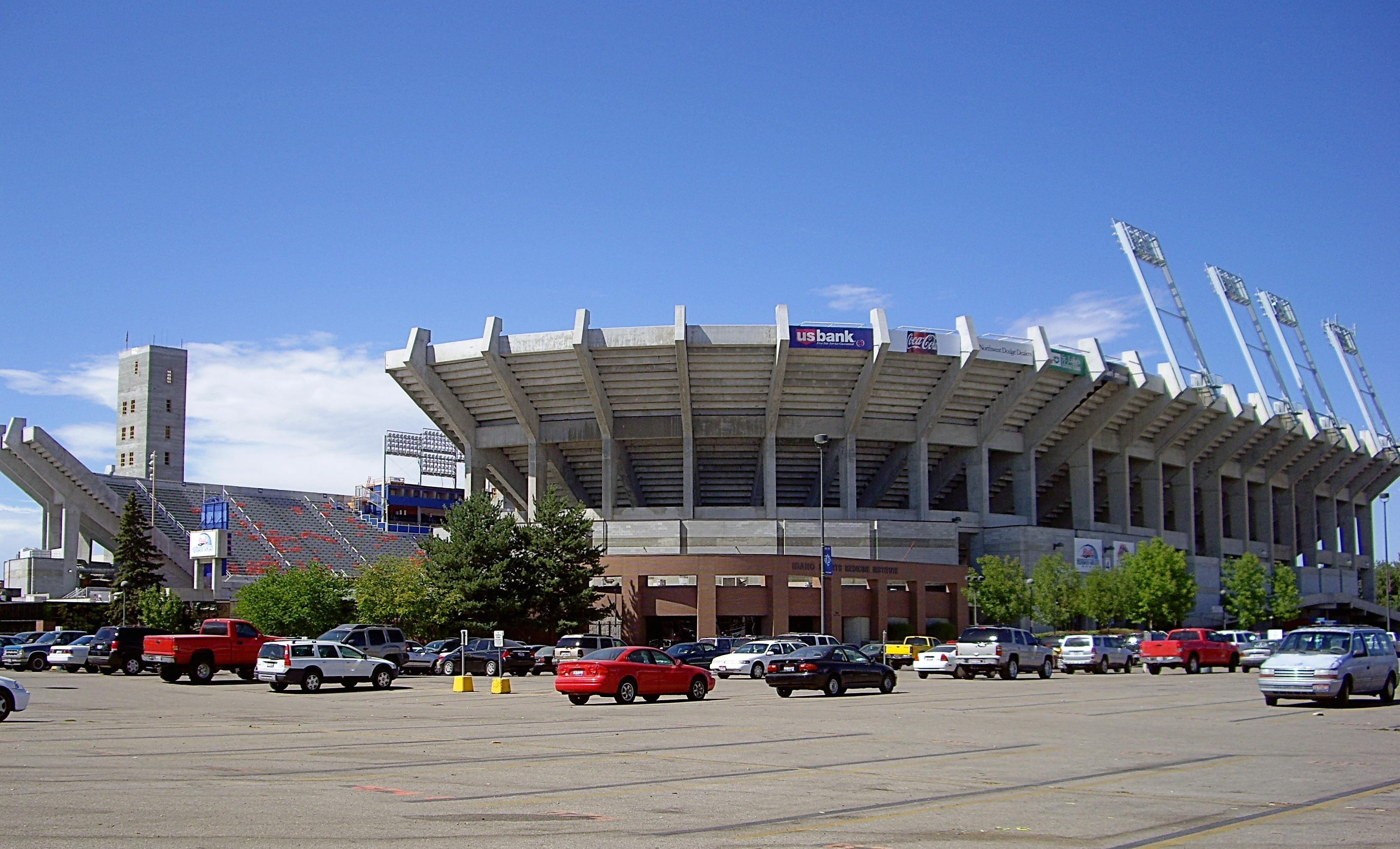
No list of unique college stadiums is complete without Albertsons Stadium, home to Boise State’s iconic blue turf. Known as “The Smurf Turf”, this stadium has the only blue playing field in all of college football, making it an instant eye-catcher on national broadcasts. Beyond its unique look, Albertsons Stadium has become a fortress for Boise State football, consistently ranking as one of the toughest places to play. Between the high-altitude setting, the tight-knit crowd, and the mind-bending visuals of the blue turf, this stadium remains one of the most distinct and legendary college sports venues in the world.
The Enduring Legacy of College Stadiums
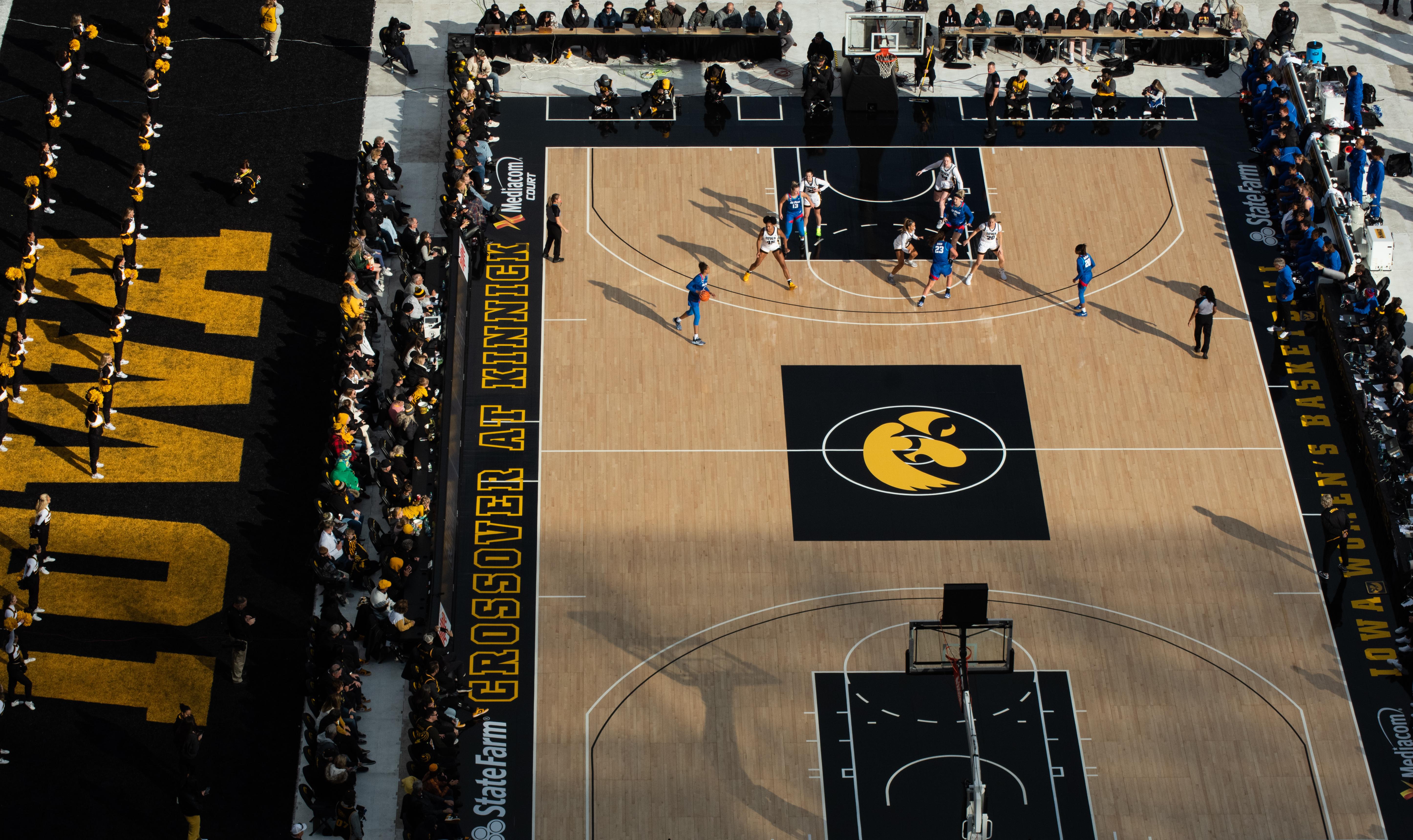
As we conclude our journey through these 28 wonders of the sporting world, it becomes evident that college stadiums are more than just venues for athletic competition. They are living embodiments of tradition, innovation, and community. Each stadium tells a unique story, reflecting the values and spirit of its institution. These architectural marvels inspire athletes and fans alike, creating unforgettable experiences that resonate long after the final whistle. As college sports continue to evolve, these stadiums will remain at the heart of the action, defying convention and inspiring future generations.

